



PARTNERS IN EXCELLENCE 04 ESSENTIAL WORKSHOPS AND MASTERCLASSES 42 IDENTIFYING AND MITIGATING KEY RISKS 34
2023 | No 1175
OCTOBER











































































































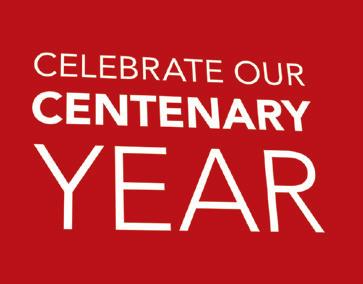
Your brand is invited to join the MBSA as it celebrates South African Builder’s centenary in 2023. Book your centenary/congratulatory ads now and ensure you’re a part of this incredible milestone. Contact: Ruwayda Mahomed Office: +27 (011) 883 4627 Mobile: +27 (0)72 383 3203 AUTONOMOUS MACHINES 35 SAFETY FOR EXCAVATIONS 32 BRAT NG99YEA R EC RBE ENERGY THE ROADMAPSUSTAINABLE 34 PORTABLE TRAINING FOR SA’S UNEMPLOYED 28 SEPTEMBER 2022 No 1163 G 99YEAR ARBELEC MBA REGIONAL SAFETY AWARDS 2022 07 PLUMBING INDUSTRY TRANSFORMATION 18 GEOTECHNICAL ENGINEERING IN CONSTRUCTION 28 FRANKIE PAPPAS House of the Big Arch, Waterberg mountains Breath-takingbrickinspirationcomesfromtheHouse oftheBigArchbydesignfirmFrankiePappas.Locatedinanaturereserve,thehomeaimstofadeintoitsbackground,letting thelandscapetakecentrestage.Itwasconstructedusingglassandaluminium,butit’stheroughstockbrick,selectedtomatch thesurroundingsandstone,thatstealstheshow–proofthatstockbrickcanbeexceedinglybeautiful. frankiepappas.com 183 2022/03/24 10:42 OCTOBER 2022 No 1164 CELEBRAT 99YEAR TARBELE GN SRAEY99 OPTIMISM AT MBSA CONGRESSS 2022 10 FOCUS: TRANSPORT AND EQUIPMENT 34 SCAFFOLDING SAFETY 26 environment-friendly VE O H C Y K for good A R OV C E YB C R AND RENOVATIONS 2022 | No 1161 JULY AUGUST 2022 No 1162 CELEBRAT 99YEAR ITARBELEC RAEY99 POSITIVE TURNOUT FOR INDUSTRY TRADE SHOWS 26 CLIMATEPROOF ROADS 32 WE ARE OUR PEOPLE Leaders in Construction and Leaders in Transformation AVOIDING REPEATTYPE INJURIES 8
without the express and written approval of Master Builders South Africa is prohibited. No material contained herein may be reproduced in whole or in part without the prior written permission of the publisher. SA Builder © 2023. All rights reserved.
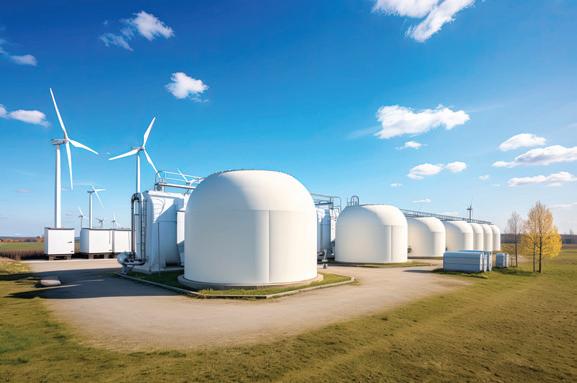


CONTENTS AND CREDITS
PUBLISHER Isikhova Media (Pty) Ltd 10th Floor, Metal Box, 25 Owl Street, Milpark, Johannesburg, South Africa
Tel: +27 11 883 4627
www.sabuilder.co.za
www.isikhova.co.za
CONTRIBUTIONS
Master Builders South Africa

Tel: +27 11 205 9000

Free download available on: www.sabuilder.co.za Twitter: @Builders_SA | Facebook: @SouthAfricanBuilder
E-mail: editor@sabuilder.co.za
www.masterbuilders.org.za
Director: brand strategy: Jenny Justus
Tel: 083 450 6052
E-mail: jenny@isikhova.co.za
Managing director: Imraan Mahomed
E-mail: imraan@isikhova.co.za
Creative director: Joanne Brook
E-mail: joanne@isikhova.co.za
Sales director: Thuli Majola
E-mail: thuli@isikhova.co.za
Copy editor: Anne Phillips
Advertising sales: Tel: +27 11 883 4627 Mobile: 072 383 3203/083 450 6052
savvy thinkers smart doers together people Proud Media Partner

02 From the president’s desk 02 The MBSA 2023 Annual Congress COVER STORY 04 Partners in excellence MBA EAST CAPE 06 MBSA Congress 2023 MBSA CONGRESS 2023 08 Seen at the 2023 congress MBA NEWS 12 Preventing “struck by” injuries INDUSTRY NEWS 14 Protecting solar systems 16 Urban management is non-negotiable 17 CESA celebrates the power of collaboration 18 Response to the announcement of a construction mafia hotline 19 Raising the bar in air filtration on dusty sites 20 Reviving the construction industry and property markets 22 CCSA launches facility to provide industry skills 24 AECOM celebrates young talent BUSINESS 25 Bridging the currency chasm PRODUCTS 28 Choosing the right lubricant for heat-intensive applications 29 Chryso Eco Dust minimises dust emissions FEATURE 30 The people power principle 34 SA’s construction sector: Identifying and mitigating key risks PROJECT MANAGEMENT 36 EPC vs EPCM contracts INNOVATION 40 How grid interactive buildings can become prosumers SKILLS AND TRAINING 42 Essential workshops and masterclasses GLOBAL VIEW 44 Bamboo clouds by the water: White Crane Lake Visitor Centre OCTOBER 2023 SOUTH AFRICAN BUILDER 01
CONTENTS South African Builder is the official journal of Master Builders South Africa, established in 1923. The opinions expressed by contributors are not necessarily those of Master Builders South Africa. SA Builder is a registered trademark of Master Builders South Africa. Any use of this trademark
08 30 21 40
FROM THE PRESIDENT’S DESK
In my acceptance speech last year, I highlighted priorities for my presidency, which included the need to unblock the government project pipeline to increase work opportunities in the construction industry. I also pointed to the catastrophe of the “construction mafia” that has been and remains the biggest threat to sustainability of the sector, and the need for prioritisation of the matter by the president of the country. I also emphasised building of consensus among industry role-players as a key element of a successful approach to sector recovery and sustainable growth. These commitments have been at the heart of my servitude to the Master Builders membership since our last congress. I am happy to report that strides have been made towards each of these priorities and more.
The project pipeline has been opening up, albeit slowly, with additional Strategic Infrastructure Projects under the Green Hydrogen National Programme being gazetted in December 2022. Our continued
engagement has also seen the Ministry of Public Works and Infrastructure making further commitments to resolving blocked and stalled projects in the Strategic Infrastructure Projects pipeline.

STATE OF THE INDUSTRY
Notwithstanding our achievements in these areas, construction industry output is expected to decline in 2023 by up to 1,9%. Energy disruptions, material shortages, a decrease in value of approved building plans and a decline in business activities in the country have snowballed into fewer work opportunities and declining margins for our membership. The decline, which started in 2016 and accelerated during the Covid-19 pandemic, has continued to negate our concerted efforts of turning the tide towards industry growth.
The average business activity index decline of 3% in 2022 is mirrored in the year-on-year decrease in recorded building plans passed by our large municipalities, which fell by 11,8% in the first quarter of 2023.
THE MBSA 2023 ANNUAL CONGRESS
The Master Builders South Africa (MBSA) 2023 Annual Congress, held at the Century City Conference Centre in Cape Town on 8 September, was nothing short of a resounding success. The event kicked off with an opening led by MBSA president Musa Shangase, setting the tone for what would be a memorable gathering. The keynote address was delivered by Sihle Zikalala, Minister of Public Works and Infrastructure.
Under the overarching theme "Powering Sustainable Infrastructure", panel discussions delved into the pressing challenges facing the construction industry, as well as the ever-looming energy crisis. CEOs and
directors of top companies, private-sector leaders, community representatives and industry leaders came together to brainstorm solutions and share insights. One notable addition to the programme was the presence of Geordin Hill-Lewis, mayor of the City of Cape Town, who spoke about local and self-power generation, sharing best practices that are crucial for the industry's future.
MBSA is a federation of registered employer associations representing contractors and employers in the construction industry. The federation’s Master Builders Associations represent more than 3 000 contractors and employers in the industry.
SOUTH AFRICAN BUILDER OCTOBER 2023 02
MESSAGE FROM THE PRESIDENT
Musa Shangase, MBSA president





INTRODUCING Luxens Universal Acrylic Wall & Ceiling Paint 5L White 81490225 R349 Luxens Water-Based Plaster Primer 5L White 81490226 R349 Luxens Solvent-Based Plaster Primer 5L White 81490227 R299 Fourways | Greenstone | Boksburg | Little Falls leroymerlinsa1 leroymerlin.southafrica leroymerlinsa - Great Quality - Low Price - 10 Year Life Expectancy - Superior Washability - High Coverage EXCLUSIVE TO Make your home the best place to live
PARTNERS IN EXCELLENCE
For Pretoria-based Zenzele Paving & Cladding, quality has always been the cornerstone of success – an ethos that has attracted both small customers from local communities and large firms of developers and contractors.
Formed in 2007, the precast product manufacturer specialises in concrete pavers as well as various types of bricks, cladding, kerbs, blocks and tiles. According its founder and owner Wendel Krook, the high-quality cement it offers its clients has ensured consistent results and colour in projects.
“Over the years, we’ve built a long-term relationship with AfriSam as our leading cement supplier,” says Krook. “To respond to our customers’ needs, we required a partner that shared our commitment to quality, reliability and consistency – and AfriSam certainly does.”
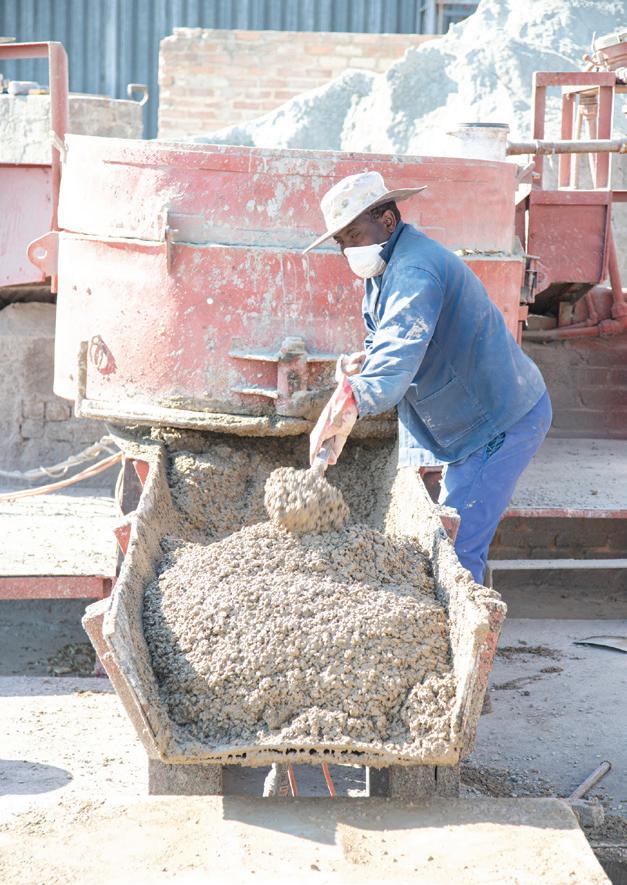

Zenzele co-founder Hengelene Krook says the company’s business has grown in the most desirable of ways – through word-ofmouth recommendations from
satisfied customers, including local families and home-owners, paving contractors and housing developers. Products bearing the Zenzele name are only dispatched if they are good enough for her own home, says Krook.
“As a family business, we still love seeing the excitement of a grandmother from Soshanguve choosing pavers with her family – and knowing the joy they’ll get from our attractive and long-lasting products,” she says. “The same principle applies to our growing list of large commercial customers, who need to be sure that our products will satisfy the end-user and stand the test of time.”
The family values of commitment, loyalty and integrity underpinning the company are part of its culture, resulting in a staff with very little turnover and many employees already having over a decade of service. This retention of skills and experience ensures attention to detail in technical and other aspects of the business. In fact, Zenzele’s first employee –
“Our quality and service have helped to create a loyal customer base, with many contractors buying from us for 10 years or more and home-owners referring their neighbours to us,” says O’Kelly.
“We need support from our own
COVER STORY
Jacqueline O’Kelly – is today its general manager.
(Below): Zanele embraces strong family values and has a very low staff turnover, with many employees having already worked there for over a decade.
(Above): The reliable performance of AfriSam’s cement is crucial for success in phased construction projects.
supply partners to achieve this and dealing with AfriSam is one of the pleasures of my job. Being able to rely on everything from prompt deliveries to efficient accounting makes our work much easier.”
Sales and marketing representative Tinus Redelinghuys agrees, adding that the reliable performance of AfriSam’s cement is crucial for success in phased construction projects.

“We’re often involved in the first phase of a large construction project and by punctually delivering quality products, we remain in the running for future phases,” says Redelinghuys. “Thanks to AfriSam’s quick service, we can have the required cement quantities when we need them, allowing us to produce efficiently and, in turn, deliver ex-stock to our customers.”
Shane Moodley, AfriSam’s territory sales manager, makes regular visits to Zenzele to ensure that all bases are being covered. Krook points out that, as a relatively small business, Zenzele does not often

receive this level of service from larger, national suppliers.
“We never get the feeling that we’re just a number in AfriSam’s books,” she says. “Despite us being a much smaller company, it really does care about its relationship with us.”
Moodley explains that AfriSam supplies 42.5R CEM II High Strength Cement to Zenzele, which gives early-age strength to the product and avoids rejection, while streamlining production and dispatch. Krook stresses that when economic times are challenging –as they are at present – Zenzele’s customers prefer not to have stock of their own in order to keep their inventories low.
“They expect us to deliver within a day or two of placing an order,” he says. “Thanks to AfriSam’s cement consistency and quality, we can predict exactly when our pavers will be ready to supply – and can quickly deliver what customers need.”

Adele Wentzel, AfriSam’s sales manager: manufacturing for Gauteng, stresses another important aspect of the two companies’ solid relationship: information-sharing and regular interaction.
“We also provide technical support and back-up to Zenzele, including test results and certificates,” she says. “It’s a partnership that really works well and we’re proud to be associated with such a caring and well-respected company.”
OCTOBER 2023 SOUTH AFRICAN BUILDER 05 COVER STORY
(Above): Over the years, Zenzele has built a solid relationship with AfriSam, its leading cement supplier.
(Below): Zenzele Paving & Cladding specialises in concrete pavers, as well as various types of bricks, cladding, kerbs, blocks and tiles.
(Above): AfriSam also provides technical support and back-up to Zenzele, including test results and certificates.
MBSA CONGRESS 2023
Department of Public Works and Infrastructure Minister Sihle

Zikalala addressed the congress and mentioned a number of matters relevant to our members. He said that the ministers and members of the Executive Council had endorsed the Construction Industry Recovery Plan, which aims to develop the sector, specifically the lagging investment in infrastructure over the past decade. The plan would now be brought before Cabinet and its committees for approval.
Zikalala also mentioned that funds had been set aside for project preparation in order to ensure that these came to fruition. The panel discussion that followed his address also referred to the lack of government infrastructure spend and the need for serious attention to be given to this matter.
CORRUPTION
Zikalala refer to corruption in his address, specifically the Infrastructure Built Environment Anti-Corruption Forum, which is convened by the Special Investigating Unit (SIU).
We intend to cover this topic in more depth in a future issue.
Please note that the hotline for the SIU, to which callers can report instances of corruption anonymously, is: 0800 037 774
RED TAPE
The lack of integration of regulations, resulting in delays
in getting construction projects off the ground, was also raised repeatedly at the congress. The situation is often referred to as “the miracle of breaking ground”, due to the often lengthy delays in obtaining various approvals.
• Credit/Cessions for small and emerging contractors.
The East Cape branch will be covering some of this information in future article. Nineteen resolutions were recorded and will form the basis for ongoing discussions within MBSA, going forward.
EVENTS
Our annual dinner at Gqeberha on 31 August 2023 celebrated our 125th birthday and the event was a suitably festive and enjoyable one. We have posted a selection of photographs from it on our Facebook page.
PAYMENT
Zikalala mentioned that government needed to “pay on time”, referring to the target of paying service providers within 30 days. He said that where delays were being caused by corrupt officials attempting to elicit a bribe, such officials would be severely dealt with.
Further topics covered at the congress included:
• The CIDB Amendment Bill.
• Site invasions (the “construction mafia”).
• Foreign contractors.
• Implementing agents.
• The Public Procurement Bill.
Our Border/Kei event in East London took place on 21 September and was open to members and non-members throughout the Border/Kei area.
NATIONAL HEALTH & SAFETY AWARD-WINNERS
MBA East Cape congratulates the following winners of our National Health & Safety Awards and thanks them for maintaining the high standards which make our industry a safer and more efficient one:
• Plant yard – GVK-Siya Zama –first place
• R15-40 million – WBHO EC –third place
• R450-750 million –GVK-Siya Zama – second place
• > R750 million – GVK-Siya Zama – third place
SOUTH AFRICAN BUILDER OCTOBER 2023 06
MBA EAST CAPE
WE ADD MUCH MORE
VALUE
Our specialists are standing by to assist you with design, specifications, detailed drawings, and certifications





We’ll also do a rational design to help your plans comply with Sans 10400 XA. Our after-sales service extends to on-site, trade and technical assistance, from placing the order – to installation.








Call 086 110 2425 now. We’d be happy to assist with your next project.
www.summitxps.co.za
R-VALUES THAN JUST GOOD
SEEN AT THE MBSA CONGRESS 2023

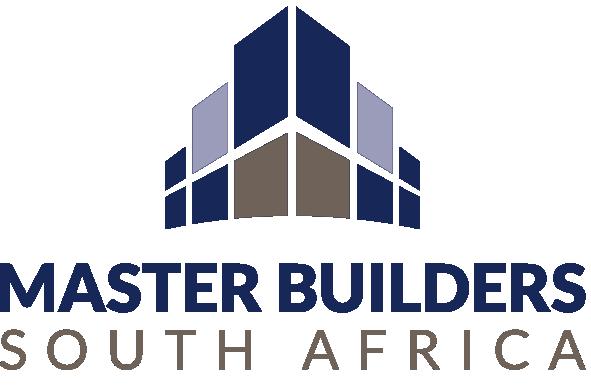





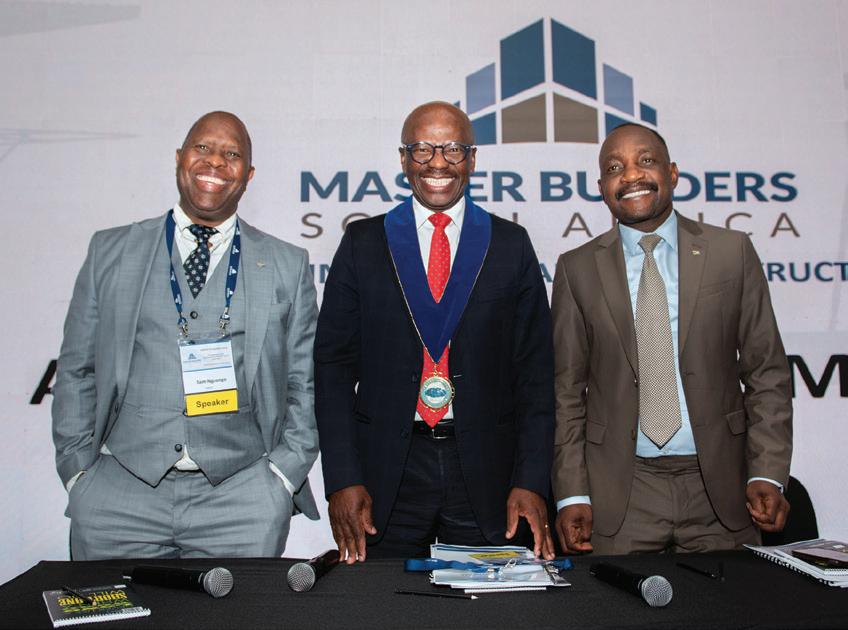






SOUTH AFRICAN BUILDER OCTOBER 2023 08 MBSA CONGRESS 2023






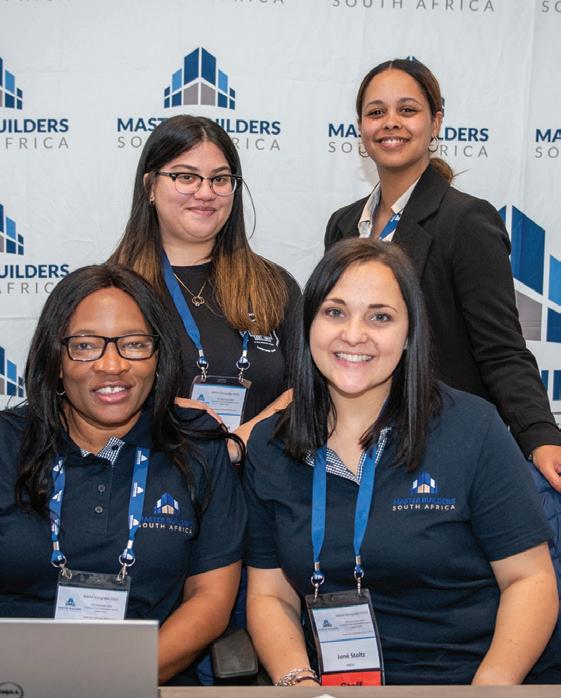





OCTOBER 2023 SOUTH AFRICAN BUILDER 09 MBSA CONGRESS 2023
MBSA CONGRESS 2023














SOUTH AFRICAN BUILDER OCTOBER 2023 10





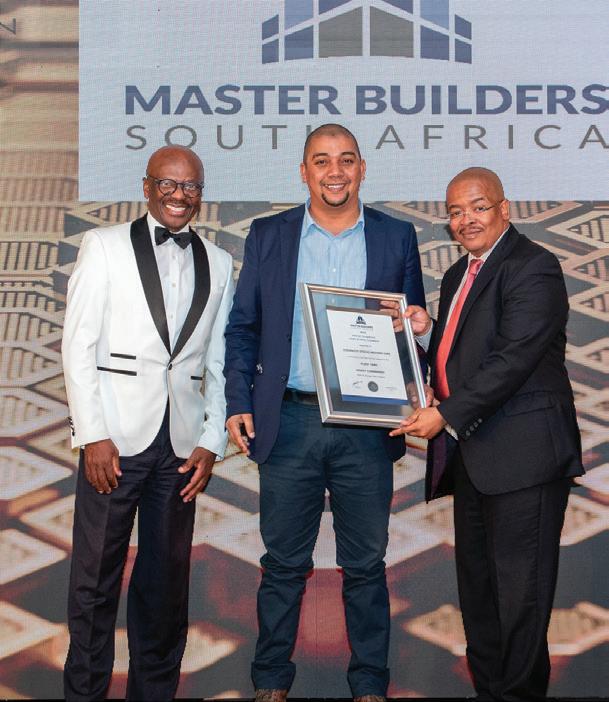

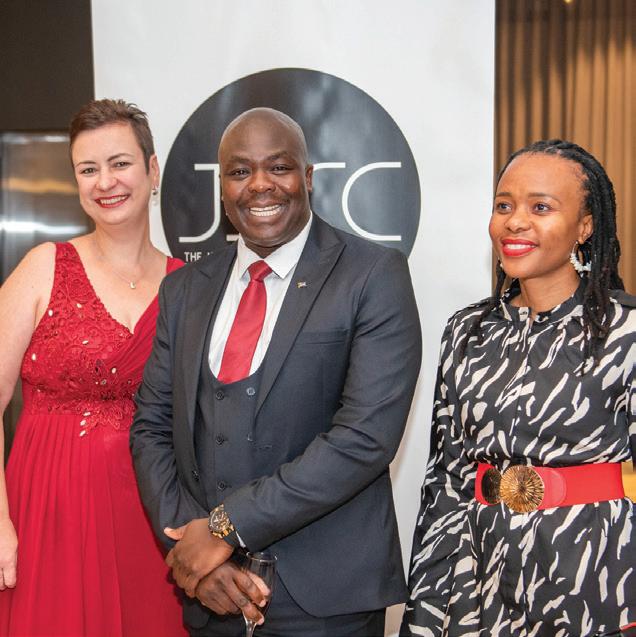
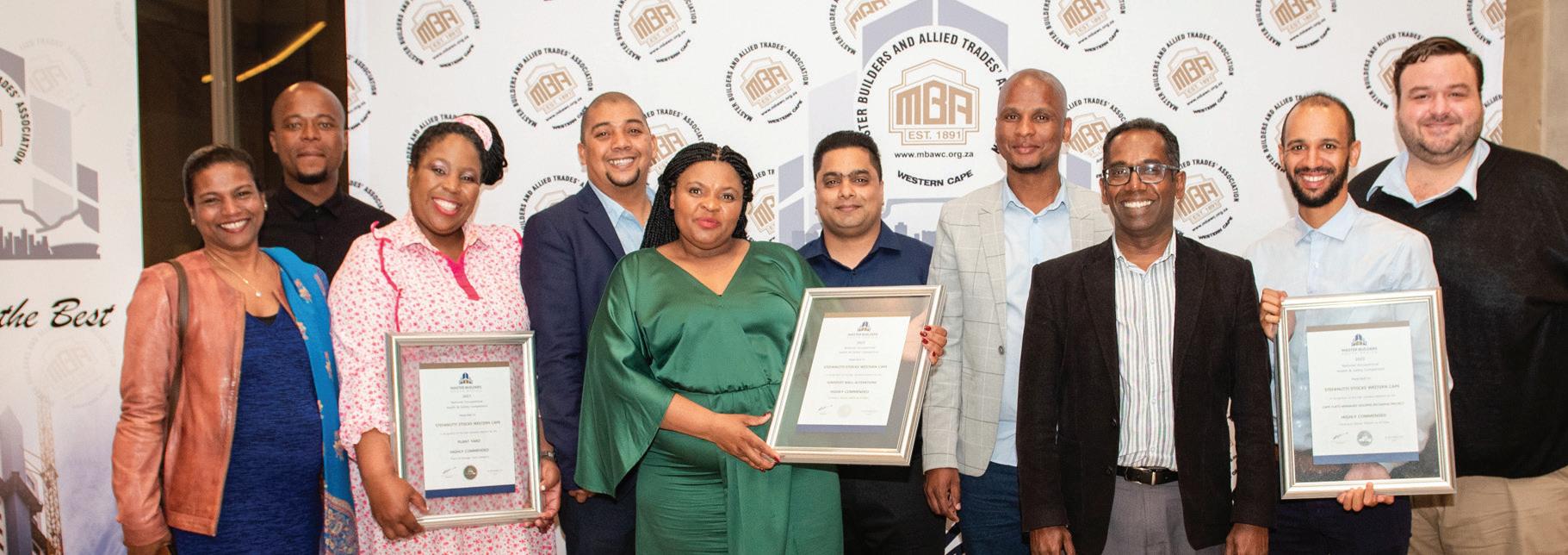




OCTOBER 2023 SOUTH AFRICAN BUILDER 11 MBSA CONGRESS 2023 Visit the MBSA Facebook page for more event photos
PREVENTING “STRUCK BY” INJURIES
“Struck by” incidents are the leading cause of non-fatal injuries and the second most common cause of fatalities among construction workers. These injuries occur when a worker is struck by a moving vehicle, equipment or a falling or flying object. For construction workers, the risk of non-fatal “struck by” injuries is twice that of all other industries combined and they suffer more of them than labourers in any other industry.

Both employers and workers are responsible for doing their part in reducing these injuries. Scheduling pressures and lack of training can create barriers to focusing on prevention efforts. Employers can still participate by holding “Toolbox Talks” and displaying flyers around the jobsite, which are effective ways of educating workers about the risks of such accidents.
Ensure that workers are given comprehensive training, including the safe operation of power tools and equipment, and encourage earning appropriate certifications.
The following best practices can be used to reduce the risk of “struck by” injuries due to equipment and falling or flying objects:
• Tie smaller tools to work belts to prevent dropped objects.

• Wear appropriate protective gear (safety glasses, hard hats, face shields, etc).
• Use pedestrian walkways and exercise caution when working near heavy equipment.
• Inspect all tools and equipment before use. A logbook recording
all such inspections will help in keeping track of the condition of this equipment and ensuring that it is replaced or repaired, when necessary.
• Use sequential triggers instead of contact triggers for nail guns.

• Never work under a load, especially during lifting.
• Secure all loads and lift evenly to prevent slipping.
• Increase the visibility of workers and equipment.
• Use positive barriers between workers and traffic.
• Employ prevention methods using vehicle technologies such as driver and worker warning systems, speed reduc tion systems, roll-over protection structures and seatbelts.

12 MBA NEWS
BETTER ROADS TO A BETTER FUTURE
Tekano Road Solutions understands that the road to empowerment needs to be as strong and sturdy as the roads we drive on. Which is why we’re as committed to excellence in our products as we are to the growth and upliftment of women in the construction industry. As a womenowned company, we walk the talk and aim to become a model for other women-owned companies in the sector and beyond.

Our focus is on value-added services that increase market share and improve the infrastructure of South African roads – the arteries on which our communities and economy depend.
Tekano’s high-quality bitumen emulsions and products are leading solutions for road maintenance and surfacing, trusted in the industry for their reliability, durability and top-class manufacture. With a collective 25 years’ experience, our team offers expert advice on the products best suited for a wide range of projects.
Our products are supplied to mining companies, civil engineering companies, construction companies, retail hardware stores, property developments and schools with sports facilities, while our publicsector clients include the Ministry of Transport, SANRAL and the Ministry of Public Works and Infrastructure.
Based in Benoni, Gauteng, we distribute our products as far afield as the Northern Cape, North West, the Free State and Mpumalanga.
Our range includes:
SS60 – A stable-grade, low-viscosity, onionic, slow-set bitumen emulsion used mainly as a cold applied binder for manufacturing slurry moistures. It can also be diluted with water and applied to aged seals as an enrichment spray or tack coat for asphalt overlaying.
EP28 – A Colseal slurry seal for sealing and patch repairs. Ideal for sealing pre-surfacing dressing patches, or for covering score marks and treating driveways.

50/70 Bitumen Penetration
Grade – 60/70 is a standardgrade bitumen usually used as a paving-grade bitumen for road
construction and producing asphalt. Mainly used in the manufacture of hot-mix asphalt for bases, 60/70 is a semi-hard penetration grade, best suited to areas with warm weather conditions.

70/100 Penetration Grade
Bitumen – Used for the construction of single seals, double seals and Cape seals, either as a tack coat or penetration spray. Also suitable as a base material for manufacturing emulsions and polymer-modified binders.
KRS Colseal – A pre-mixed slurry seal for sealing and patch repairs. Ideal for sealing pre-surface dressing patches, covering score marks and treating driveways.
Whatever your emulsion or bitumen requirements, Tekano has the right solution for you – on time, every time.
Head office: 11 Tibet Rd, Putfontein, Benoni, Gauteng.
Free State: 107 Zastron St, Unit 8, Boward Building, Westdene. Tel: 010 065 4724 or 078 339 5768.
E-mail: info@tekanors.co.za.
Website: www.tekanors.co.za
OCTOBER 2023 SOUTH AFRICAN BUILDER 13 SPONSORED EDITORIAL
(Left): Keabetswe Mabitsela, Managing Director.
PROTECTING SOLAR SYSTEMS
We may be entering an unusually hot summer now, but global weather patterns have been significantly altered due to climate change – we are likely to experience an unusually cold winter come May. South Africans would do well to take steps now to protect their solar systems, ahead of time.
Extreme weather can both permanently damage solar systems and substantially lower power generation capabilities. However, the extent of winter weather damage is determined in part by the quality of the solar installation and the severity of the weather conditions, notes Rein Snoeck Henkemans, MD of Alumo Energy.
“Home-owners who’ve appointed a trusted solar provider and installer who use quality parts from reputable brands, and have the necessary solar expertise, have less
to fear during the winter months than someone who unknowingly hired a member of the so-called ‘bakkie brigade’ to mount their roof solar panels,” he cautions.

PROTECTING AGAINST VARIOUS WINTER PHENOMENA
A wide range of winter weather conditions can hamper or degrade solar production and solar systems in various ways. For example, excessive rainfall can potentially cause water leaks or flooding, which can damage the electrical components of an improperly installed solar system. However, proper waterproofing measures and installation techniques can mitigate this risk, notes Snoeck Henkemans.
Cold temperatures alone do not typically pose a significant risk to panels. Hailstorms, which are common around the country
during summer, can be particularly damaging to the surface area of solar panels. Large hailstones can cause physical damage to the panels, leading to cracks or shattered glass. However, extremely low temperatures can affect battery performance, reduce overall efficiency of the system and cause frost build-up on a panel’s surface, lowering its efficiency. Moreover, snow accumulation on solar panels can greatly reduce their efficiency by obscuring sunlight, while the weight of heavy snow build-up can strain the mounting system or even cause it to collapse. The removal or cleaning of snow build-up, if done incorrectly, can damage panels as well.
FIVE WAYS TO PROTECT A SYSTEM FROM SUB-OPTIMAL WEATHER:
1. Regularly clear any snow build-up from solar panels using a soft-bristle brush, foam squeegee or plastic snow rake.
014 INDUSTRY NEWS
Be careful not to damage the panels while clearing the snow. Unsuitable tools or coarse material can scratch or crack the surface. Avoid using sharp objects, metal tools or abrasive materials.
2. Do not apply excessive pressure on the panels. Gently remove the snow without pressing too hard on the panels and use a sweeping or pushing motion, rather than scraping forcefully. Alternatively, pour water on the panels.
3. Beware of falling hazards. Clearing snow from rooftop panels may require climbing on a ladder or accessing the roof in another manner and work may be conducted at a sloped angle. Take appropriate safety precautions to prevent falls or accidents.
4. Remember that a solar system is still an electrical system, so there is a risk of electrical injury with improperly installed systems. Before attempting to clear the snow, turn off the system.

5. Finally, if in doubt, contact a professional installer and request that they send an expert to clean the panels and conduct general system maintenance.
“At Alumo, regular maintenance forms part of the majority of our packages. We also have experienced cleaners who can be hired at any time to ensure that panels are kept in tip-top condition. This not only ensures that the work’s done safely and correctly, but maintains the integrity of your system and allows for defect detection,” says Snoeck Henkemans.
Experienced installers will also ensure that the electrical connections and wiring are correctly installed to minimise energy losses. A high-quality installation will help generate the maximum amount of electricity, achieve a better return on investment in the long run and
ensure the system can stand the tests of time and Mother Nature.
“It’s also important to note that professional solar installers will never place their reputation at risk by cutting corners throughout installation and maintenance. It’s important not to use fly-bynight companies who may have disappeared when you require post-installation maintenance and assistance,” warns Snoeck Henkemans.

OCTOBER 2023 SOUTH AFRICAN BUILDER 15 INDUSTRY NEWS
(Above): A solar system can be damaged by extreme weather – and is dangerous if it is incorrectly installed.
“A HIGH-QUALITY INSTALLATION WILL HELP GENERATE THE MAXIMUM AMOUNT OF ELECTRICITY, ACHIEVE A BETTER RETURN ON INVESTMENT IN THE LONG RUN AND ENSURE THE SYSTEM CAN STAND THE TESTS OF TIME AND MOTHER NATURE.”
URBAN MANAGEMENT IS NON-NEGOTIABLE
The recent spate of serious events in the Johannesburg CBD – including the tragic fire in Marshalltown which claimed 77 lives and the devastating gas leaks in De Korte and Bree Sts –continues to raise concerns over poor urban management, lack of by-law enforcement and inadequate governance within the CBD.
“Though the media coverage of these devastating events shines a much-needed spotlight on the challenges faced in the inner city of downtown Johannesburg, these events are regrettably not isolated and are, in fact, the consequences of a much longer-standing issue that needs to be addressed urgently,” says Paul Jackson, CEO of commercial property financier TUHF.

As an invested stakeholder in the inner city for the past 20 years with more than R5 billion invested in the Johannesburg CBD, TUHF has persistently called for action to remedy these problems. “From the lack of service delivery and the increased scourge of hijacked
buildings to damage to properties caused by the 2021 riots, xenophobic attacks and dangerously insufficient maintenance of infrastructure, we’ve relentlessly voiced our concerns and engaged with the local government to find solutions,” says Jackson. “There’s an urgent need for improved management and intervention in the CBD to ensure the safety of the people who live here and the imperative growth of this vital economic hub, which isn’t achievable without local government action.
“Regeneration in the inner city has seen ordinary people with street smarts and knowledge turn run-down buildings into successful, affordable rental housing businesses,” he adds. “TUHF has empowered aspiring property entrepreneurs to create safe homes and jobs within the inner city and make an impact on the communities who live, work and play here. We call for urgent change in the way the Johannesburg CBD’s being managed.”
The company says the recent horrifying incidents in the area reflect a critical systemic issue which affects the capital markets, the insurance sector, rental housing suppliers and the tenants they serve. TUHF strongly believes that this indicates lack of execution by the city management. Urban management, compliance and administration must be urgently improved to prevent further incidents from occurring.
“The well-being of the residents and businesses in the CBD should be a top priority for the city,” says Lusanda Netshitenzhe, CEO of TUHF21. “TUHF urges the City of Johannesburg to prioritise improved management and better governance of the inner city and to take concrete steps to address its deterioration. We at TUHF believe in the investment case of inner cities as essential to inclusive and transformative economic growth. Inner cities have the potential to drive real growth at a local level, providing economic opportunities to SMMEs and low- to moderateincome households.”

SOUTH AFRICAN BUILDER OCTOBER 2023 16 INDUSTRY NEWS
(Above): Paul Jackson, CEO of TUHF.
CESA CELEBRATES THE POWER
OF COLLABORATION
The 51st Engineering Excellence Awards of Consulting Engineers SA (CESA) took place on 16 August. The awards recognise the significance of collaborating in fostering a dynamic engineering industry and delivering highquality infrastructure projects.
CESA’s CEO, Chris Campbell, stressed the importance of working together to address complex challenges and drive positive change. “Nothing can be achieved in our infrastructure space without embarking on a process of collaboration with partners across a spectrum of industries,” he said.
One of the key partnerships contributing to the success of the awards is with Aon, a platinum title sponsor and long-standing supporter of the CESA Aon Engineering Excellence Awards for the past 24 years.
“We realise that our member companies, when embarking on their project activities, require efficient and effective professional indemnity insurance. Enter Aon, with whom CESA’s partnership
extends far beyond the awards ceremony, allowing for continued engagements that provide invaluable insights into the risks confronting the engineering industry, as well as projected ones. Understanding the private insurance market and its outlook is vital, as it impacts the future sustainability and costs within our local markets,” said Campbell.
Throughout its long relationship with CESA, Aon has witnessed the significant contributions made by the engineering industry to the country’s economy and every facet of its society.

“Aon delivers our expertise across various offerings to engineering professionals, a segment in which we’ve developed and designed a range of bespoke programmes. These cater to the specific needs of engineering professionals, whether it’s securing personal assets, business assets, liability risk or working with business partners to ensure that risks are not only managed, but transferred to insurers to protect the livelihoods of engineering professionals. The
ability to plan for the future, by safeguarding what one has built today, is fundamental to moving forward,” said Dr Nolwandle Mgoqi, Aon’s CEO.


Trans-Africa Projects is another key sponsor of the CESA Aon Engineering Excellence Awards. Campbell said the company’s involvement reflected a shared vision of empowering the next generation of engineering leaders.
He explained the potential for industry players to foster partnerships with CESA, which represents over 580 member firms in the consulting engineering industry. “Where the opportunity arises, there could be other products that might be beneficial to our employees and CESA member firms,” he said.
He added that building a thriving engineering industry required collective efforts, fostering innovation and upholding high standards.
OCTOBER 2023 SOUTH AFRICAN BUILDER 17 INDUSTRY NEWS
(Above): CESA CEO Chris Campbell.
(Right): Dr Nolwandle Mgoqi, Aon’s CEO.
RESPONSE TO THE ANNOUNCEMENT OF A CONSTRUCTION MAFIA HOTLINE
By Chris Campbell, CEO: Consulting Engineers SA (CESA)
Public Works and Infrastructure
Minister Zihle Zikalala recently announced the establishment of a call centre for reporting disruptions by the construction mafia at construction sites.
CESA has reservations about the effectiveness of a call centre as a solution.
While we appreciate government’s efforts to address these disruptions, historically, government-operated call centre facilities have faced challenges in delivering timely and efficient services, so there are concerns about the viability of this approach. Prime among these is the absence of an efficient and reliable police response service.
Secondly, we need to ask important questions about the safety and anonymity of individuals reporting these disturbances at construction sites. It is crucial to ensure that those who come forward with
information are protected and that their concerns are addressed promptly. We seek clarity on the measures in place to safeguard anonymous callers who may face threats or reprisals for reporting such incidents.
Our industry has faced persistent disruptions since 2018. We acknowledge the efforts of law enforcement officers in this regard, but progress has been too slow in holding perpetrators accountable. It is our belief that addressing the root causes of these disruptions is essential and we echo the sentiment that without addressing such issues, challenges will persist.
We understand that public announcements and initiatives often align with political cycles, especially in the run-up to an election year. However, it is imperative that we prioritise the development of our infrastructure to foster economic growth and national development. The construction
industry plays a vital role in this process and we must focus on strengthening our capacity for crime intelligence, rather than hastily recruiting individuals without the necessary qualifications or expertise to handle an issue as delicate and dangerous as the construction mafia.

CESA recognises the significance of the construction industry for our country’s development. We remain committed to constructive dialogue and collaboration with all stakeholders to address disruptions and create a conducive environment for infrastructure development. We encourage a comprehensive approach that considers the concerns and safety of all parties involved.

INDUSTRY NEWS
SOUTH AFRICAN BUILDER OCTOBER 2023 18
RAISING THE BAR IN AIR FILTRATION ON DUSTY SITES
Catering for the increased focus on the environmental aspects of surface mining, quarrying and construction, there are now enhanced options available for air filtration on mining and earthmoving equipment.
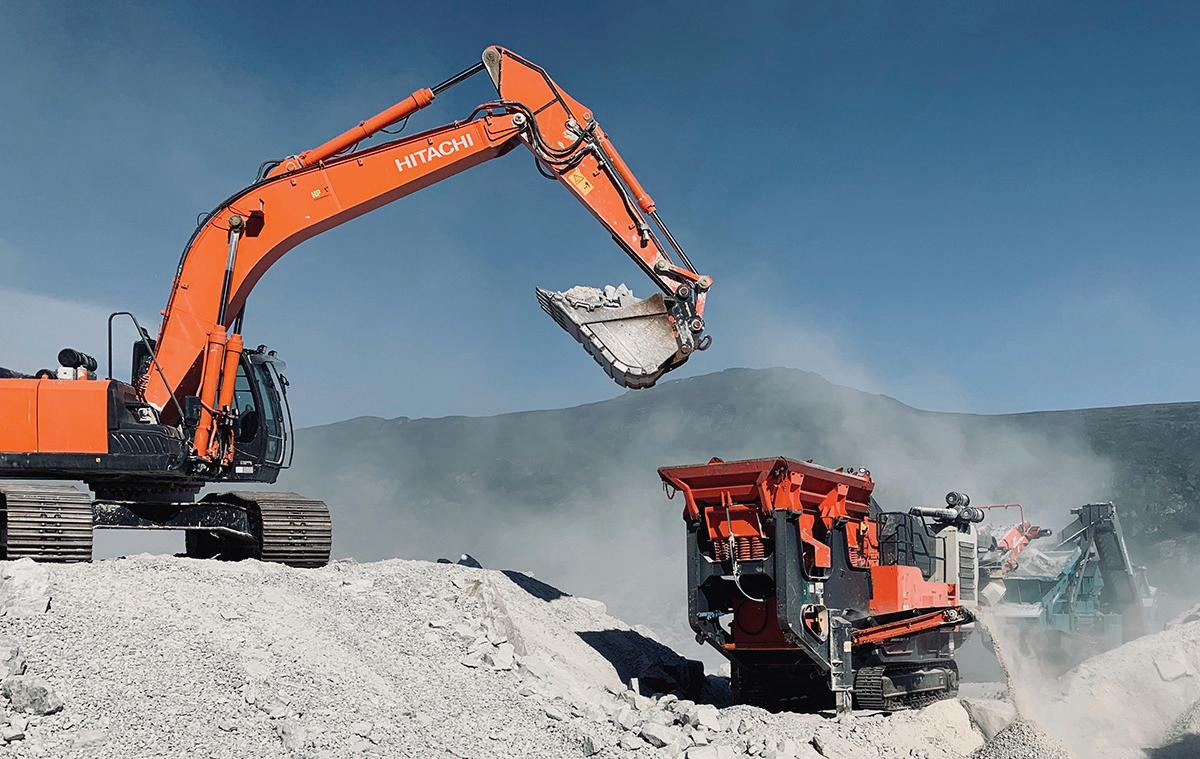
Well known for its specialised mobile HVAC solutions, Germistonbased Booyco Engineering is now a distributor of Sy-Klone
International’s air filtration technology. According to the company’s field services sales manager Gordon Postma, this brings a range of exciting products to its local customers. The SyKlone offerings include enclosed cab filtration, air pre-cleaning for engines and high-efficiency air filtration for heavy equipment.

“We can offer customers a complete cab air quality system that includes both fresh air and recirculated air systems combined with high-efficiency HEPA and EPA filtration, as well as real-time CO2 and pressure monitoring,” says Postma.
“Tighter international standards –embodied in the ISO 23875 global standard for cab air quality – are leading the world’s major mining companies to adopt better air quality control systems for their heavy machinery cabs and other operator enclosures,” he explains.

“The trend’s also being felt in southern Africa, as mining and construction companies look for more effective dust control solutions.”
The new ISO standard will require machine cabs to have a fresh air pressurisation solution, a recirculation system and a monitoring device. They will also need to be fitted with filtration that exceeds 94% efficiency at 0,3 microns, such as Sy-Klone’s EPA and HEPA filters. Many mining and earthmoving vehicles and equipment are imported with filtration systems which are not suited for the region’s dry and dusty conditions.
“Sy-Klone solutions can be retrofitted onto vehicles and equipment to provide unsurpassed levels of protection and be in compliance with emerging standards,” says Postma. “Higher levels of filtration also support the safety of machine users, promoting operator alertness and improving productivity.”
He adds that the Sy-Klone distributorship is a natural fit with Booyco Engineering’s HVAC specialisation and experience, as more effective filtration for the cab also enhances the performance and lifespan of the air-conditioning system.
OCTOBER 2023 SOUTH AFRICAN BUILDER 19 INDUSTRY NEWS
REVIVING THE CONSTRUCTION INDUSTRY AND PROPERTY MARKETS


Getting South Africa’s construction industry and residential and commercial property markets out of the doldrums requires a holistic approach, including private-sector participation and a willingness by government to change policies. Small interest rate cuts will not have an impact. It is about the bigger macro-environment and getting general economic management right.
This was the contention of FNB economist John Loos, who – at the recent inaugural Residential Investment & Development Conference in Sandton, Johannesburg – urged businesses to engage with government at a high level to address the stagnation of the
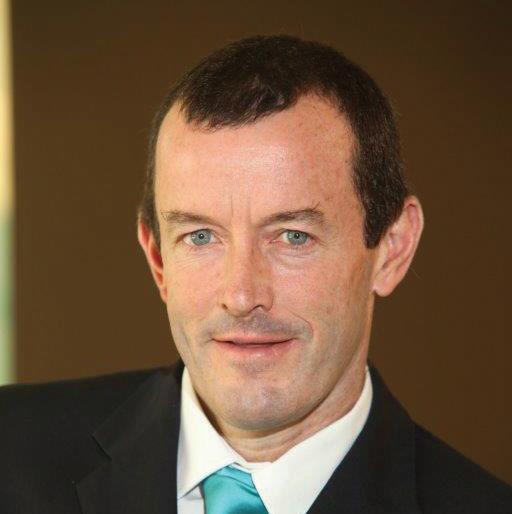
economy and the property market. While housing budgets are being “crowded out” by issues such as bailing out Eskom, SAA and the Post Office, and SA’s fiscal situation deteriorates, a government which becomes open to changing its policies, along with a well-developed, capable, well-diversified private sector ready to deliver goods and services, offers hope.
“Our private sector’s already responding swiftly to putting in electricity solutions as fast as it’s allowed to. Government needs to accelerate this and enable the private sector to deliver other goods and services. Government’s role must be that of the regulator. The private sector needs to impress upon government what
changes must take place and work with it to ensure that they happen,” said Loos.
He added that densification was critical to address SA’s housing backlog, particularly as land became scarcer, which was already a challenge in the Western Cape. He recommended that the abundance of office space be repurposed for residential use and stressed that improved urban planning was crucial. “Apartheidera large dormitory towns are
SOUTH AFRICAN BUILDER OCTOBER 2023 20 INDUSTRY NEWS
resulting in high transport costs for the poor. To reduce the costs of property, we must reduce transport costs,” he said. The solution, he stated, lay in strategic zoning and densification along road transport corridors, including bus routes. Demand for public transport would be created along high-density corridors and this would lead to a more viable public transport system. South Africans spending less on transport might have more to spend on property.


The inaugural Residential Investment & Development Conference was hosted by SmartXchange (a division of Commerce Edge SA) and was launched in response to the country’s massive housing shortage and high urbanisation rate, with the support of numerous event partners, including the Association of Residential Communities, Consulting Engineers SA, the Housing Development Agency, the National Association of Building Inspectors of SA, the National

Association of Social Housing, the National Home Builders’ Registration Council, the National Housing Finance Corporation, the Property Sector Charter Council, the Property Practitioners’ Regulatory Authority, the SA REIT Association, the SA Association of Consulting Professional Planners and the SA Local Government Association, among others.

OCTOBER 2023 SOUTH AFRICAN BUILDER 21 INDUSTRY NEWS
“DEMAND FOR PUBLIC TRANSPORT WOULD BE CREATED ALONG HIGHDENSITY CORRIDORS AND THIS WOULD LEAD TO A MORE VIABLE PUBLIC TRANSPORT SYSTEM.”
CCSA LAUNCHES FACILITY TO PROVIDE INDUSTRY SKILLS
Cement & Concrete SA (CCSA) has reacted to the increasing demand for skilled employees at all levels in the industry by launching a vacancy notice board (VNB) on its website.

Hanlie Turner, business development manager of CCSA, says the new facility lists details of available positions as a valueadded service for members of the organisation and related industries.

“Any entity looking for staff in South Africa and neighbouring countries is invited to use the link to complete the fields with the required details for a position to be advertised on the CCSA VNB, in support of the South African built environment with reference to cement and concrete.
“Vacancies published on the VNB don’t carry an endorsement from
CCSA and aren’t a guarantee of employment. The onus will remain on candidates to apply directly to advertisers and CCSA won’t engage in any correspondence regarding the process. CCSA will also not facilitate any interaction or influence outcomes between advertisers and job-seekers,” she says.

“CCSA isn’t a recruiting agency, but the decision to develop the VNB was based on the growing number of calls our office receives from individuals looking for new job opportunities and firms seeking candidates for cementand concrete-related vacancies.”
Turner says that while the VNB will address one part of the industry skills dilemma, the current situation also emphasises the need for individuals seeking employment or
career enhancement to empower themselves with authoritative knowledge about concrete technology. In this regard, CCSA’s School of Concrete Technology has over several decades acquired a resounding track record of presenting relevant courses to update or expand knowledge of concrete at various levels of expertise.
“With unemployment on one side of the scale and the desperate need for suitably qualified employees balancing the other side, CCSA’s committed to providing a comprehensive portfolio of solutions towards building a sustainable future together,” says Turner.
For further information, visit: www.cemcon-sa.org.za.
SOUTH AFRICAN BUILDER OCTOBER 2023 22 INDUSTRY NEWS
(Above): Hanlie Turner, business development manager of CCSA.
True beauty doesn’t fade with time.

Hydro aluminium garage doors are lightweight, corrosion-resistant and extremely durable, which makes them perfect for coastal areas. They’re also easy to clean and maintain. Available as single or double doors in four attractive colours, Hydro aluminium doors will enhance the kerb appeal of any home. For more info, visit hydrodoors.co.za or call 086 110 2425.

AECOM CELEBRATES YOUNG TALENT
Globally trusted infrastructure consulting firm AECOM celebrated International Youth Day on 12 August – under the theme “Green Skills for Youth: Towards a Sustainable World” – by showcasing the important roles played by some of its young candidate engineers in sustainable transport.
Chris Britz, the organisation’s transport operations leader and market sector leader transit, recently held a roundtable where the younger engineers on the transport team discussed the impact of the transport system on the environment and the need to incorporate sustainability concerns into projects. The discussion also considered the impact of environmental changes and future-proofing infrastructure to be more resilient.
Dipolelo Madumo is a traffic and transportation engineer assisting the design team with modelling for ongoing projects in the USA. Locally, he is also giving input to the Integrated Transport Master Plan for Gauteng.

He is impressed with the way AECOM takes complex interna-

tional projects in its stride. “It’s an interesting working environment in that it’s high-impact and deals with global projects, whereas I previously only had exposure to local ones,” he says. He adds that his stint at the company is giving him invaluable experience as he progresses towards professional registration.
After graduating in 2016, Anneri Maritz continued with her Master’s and joined AECOM in 2018. She is currently an assistant resident engineer who has been on site at a major road project in the Western Cape since August 2022. Despite the challenges it has posed due to its location in a catchment area, Maritz says it has been an exciting and rewarding experience.

“When I finish this project and go back to the design office, I’ll be able to make valuable contributions. It’s one thing to design something on paper, but is it constructible? Learning how people interpret your drawings on site, especially if you’re not there to explain them, develops a critical skills set,” she says.
Reabetswe Kodisang is another fresh starter at AECOM and has collaborated on a project with

Madumo. She graduated in 2017 with a BEng civil engineering degree and later furthered her studies and obtained her Honours in 2021. Commenting on the importance of resilient transport infrastructure, Kodisang says that while it all starts at the concept or design phase, it has to filter through to the actual construction, operation and then maintenance, as well as the way the infrastructure is ultimately perceived and utilised.
“The people are the end users of any transport system and that’s where education takes place. We need to educate our fellow users in how to use transport infrastructure in a more sustainable manner,” she says. That includes a holistic overview of environmental, social and governance concerns on any project.
Kodisang adds that the roundtable discussion with her colleagues and a seasoned veteran like Britz highlighted the importance of engineers and engineering. “It opened our minds to the bigger picture,” she says.
SOUTH AFRICAN BUILDER OCTOBER 2023 24 INDUSTRY NEWS
(Above, from left): Anneri Maritz, Chris Britz, Dipolelo Madumo and Reabetswe Kodisang from AECOM.
BRIDGING THE CURRENCY CHASM
According to Statistics South Africa, the construction industry currently contributes 2,4% of the GDP, compared with 4% prior to the Covid-19 pandemic. However, South African construction companies face formidable payment challenges, hindering their growth. Currency fluctuations, high fees and lengthy processing times limit profitability and expansion, especially as the industry relies heavily on materials and labour. Unless construction companies hedge against currency risk, it could seriously impact their revenue and profit margins. Streamlining cross-border payments is crucial, requiring improved solutions.
Enter Verto, a financial technology firm which deals with crossborder payments in 49 different currencies. The company was co-founded by Ola Oyetayo and Anthony Oduwole and now operates in SA, the UK, Kenya, Nigeria and India and employs over 90 people from various countries. The firm empowers businesses, particularly SMEs in the African region, through financial literacy.
“Embracing advanced digital payment technologies and platforms can unlock remarkable growth opportunities. Real-time exchange rates, automated processing and transparent
tracking empower businesses to optimise cash flow, allocate resources effectively and expand operations,” says Oletayo.
“Investing in tailored payment systems is therefore a vital business consideration. By overcoming payment barriers, South African construction firms can fuel growth, increase competitiveness and secure a prosperous future in the global marketplace.”
UNDERSTANDING CURRENCY RISK
Currency risk refers to the potential impact that fluctuations in exchange rates can have on a company's finances, particularly when it comes to cross-border

OCTOBER 2023 SOUTH AFRICAN BUILDER 25 BUSINESS
BUSINESS transactions. This is particularly risky for construction companies that often operate with thin profit margins and rely heavily on cash flow. Currency risk can lead to delays, increased costs and reduced profitability, making it essential for the companies to have a solid currency risk management strategy in place.

There are several different types of currency risks that construction companies face. One of the most common ones is transaction risk, which occurs when a company must make a payment or receive a payment in a foreign currency. In this scenario, the exchange rate at the time of the transaction can significantly impact the actual amount of money that the company ultimately receives or pays.
Another type of currency risk is translation risk, which occurs when a company has assets or liabilities in a foreign currency. If the exchange rate between the company's home currency and the foreign currency changes, it can impact the value of those assets or liabilities, potentially resulting in significant gains or losses.
The impact of currency risk can be particularly acute in emerging markets, where exchange rates can be volatile and regulatory environments may be less stable. Consider the example of a construction company in SA which has signed a contract to build a new factory for a foreign company. If the exchange rate between the two currencies fluctuates significantly during the construction process, it can impact
the cost of labour, materials and other expenses, potentially leading to delays and cost overruns on the project. Similarly, if the same South African construction company takes out a loan in a foreign currency, changes in exchange rates can impact the cost of servicing that loan, potentially causing financial instability.
“To address these challenges, construction companies in emerging markets must have a solid currency risk management strategy in place. This may involve hedging against currency fluctuations
through financial instruments such as futures or options. Alternatively, they could use payment platforms such as Verto to track currency exchange rates in real-time and manage risk exposure by booking in trades at favourable FX rates or by using multi-currency wallets,” explains Oyetayo.

HOW VERTO BEGAN
Oyetayo was born in Lagos, Nigeria and spent his early years there before relocating to the UK to study in 2005. He trained as an accountant and began his career in the City of London working with various financial institutions, such as American Express, Barclays and Lloyds bank, before deciding to become an entrepreneur.
His choice of the financial sector, he says, was triggered by the frustrations he witnessed in others battling to effect cross-border payments.
SOUTH AFRICAN BUILDER OCTOBER 2023 26
“THERE ARE SEVERAL DIFFERENT TYPES OF CURRENCY RISKS THAT CONSTRUCTION COMPANIES FACE.”
“In about 2006, many of my friends with businesses in Africa – particularly Nigeria – started reaching out to me, asking for help with their cross-border payments. After extensive research, I realised that this was a significant pain point for businesses in emerging markets, especially those with illiquid currencies.
“Over a game of poker, my now co-founder Anthony and I discussed how we could utilise technology to solve these challenges and we decided to start Verto,” he says.
Oletayo adds that the decision to enter this sector was also prompted by the failure of government to simplify the regulatory barriers
to cross-border and international financial transactions.
“Government could do more in this regard,” he says. “The balance of payments reporting process needs to be simplified to enable greater transparency and flexibility. If this were done, it would be much easier for South African businesses to make seamless international transactions.”
He believes that Verto stands out in the sector because of the accessibility it creates for businesses in terms of sending money in and out of Africa. “At its core, Verto prides itself on offering bank-beating rates for businesses to significantly reduce traditionally high-cost cross-border payments,
as well as fast settlement times, a fully transparent and intuitive platform, and offering 49 currencies to be traded using our FX solutions.
“Few of our competitors can offer the same levels of service or help businesses connect with so many African countries and emerging markets,” he says.
“Using Verto's platform for currency risk management translates into reduced exposure to currency fluctuations and improved financial stability.
“In the current trading market, where exchange rates can be volatile and unpredictable, these are particularly important considerations for local construction companies.”



6947 A.Shak Constr SA BUILDER 1/2pge Oct’23 Application-specific Release Oils and other Quality Formulated Products to enhance • Tel: + 27 11 822 2320 • Fax: + 27 11 822 2354 • e-mail: cindy@ashak.co.za • Bonding Agents • Chemical Anchors • Concrete Bonding • Concrete Crack Repairs • Concrete Release Agents • Concrete Repair Mortars • Curing Compounds • Epoxy Adhesives • Epoxy Grout • Joint Sealants • Non Shrink Grouts • Pre Cast Repairs • Water Proofing Creativity in Concrete Construction! BUSINESS
CHOOSING THE RIGHT LUBRICANT FOR HEAT-INTENSIVE APPLICATIONS
Heat-intensive processes can put immense strain on equipment, which is why using the correct lubrication is essential to prevent component failure. Selecting the right product can be daunting, but Colin Ford, MD at Lubrication Engineers (LE) SA, says there are some helpful guidelines that maintenance teams can use.
One of the most important ones is the recommended maximum useful lifetime for a grease in high-temperature bearings –information which should come with a guideline range for the use of any reputable product. “This can depend on many factors, from temperature to the size and speed of bearing, the amount of oxygen available to the grease in the bearing, the load on the bearing and the degree of external contamination,” says Ford.
For example, field testing has shown that the maximum useful lifetime guidelines for the Almasol High-Temperature Lubricant (1250) which LE supplies are 10 000 hours at 93°C, 100 hours at 149°C and one to four hours at 204°C.
“Lubrication interval
recommendations for LE’s 1250 Almasol High-Temperature Lubricant are much lower than the maximum useful lifetimes,” says Ford. “This is because normal bearing re-lubrication practices replenish only a small portion of the grease and the bulk of the grease in the bearing, at any point, has been there for a much longer time than the lubrication interval.”
VISCOSITY
In addition, it is important to consider the thickener of a grease. Bearings operating in or near

heat-generating equipment are exposed to temperatures that cause general greases to melt and run, leaving critical bearing surfaces unprotected, so having an effective thickener can protect equipment.
LE developed the 1250 Almasol
High-Temperature Lubricant with a clay thickener system that has “one of the highest temperature capabilities of any grease thickener technology currently available in the industry”, says Ford. It uses a base oil with a heavy viscosity and high flashpoint, and it has a high natural viscosity index. It also has a high dropping point.
ASSESSING THE APPLICATION
Assessing the temperature needs of a particular application is also helpful when selecting a lubrication solution. The Almasol in LE’s 1250 Almasol High-Temperature Lubricant is a solid, wear-reducing additive in the product which can withstand extremely heavy loads, chemical attack and temperatures of up to 1 038°C. This makes it ideal for applications such as asphalt plants, brick/ceramic kilns, exhaust fans, kiln car bearings, lime kilns, oven conveyors, pellet mills, plastics and soot-blowers.
Choosing products specifically designed for challenging circumstances can protect equipment, improve performance and save on maintenance and repair costs.
28 SOUTH AFRICAN BUILDER OCTOBER 2023 PRODUCTS
(Below): Choosing the right lubricant is essential for heat-intensive applications.
Chryso Eco Dust has a proven track record as an indispensable tool for industries operating in dusty environments. Michelle Fick, the organisation’s BU development manager: concrete aesthetics and key accounts, says this range of dust suppressants offers a comprehensive approach to sealing and maintaining dirt roads, gravel pathways and other dusty surfaces.
“One of the major advantages of Chryso Eco Dust is its costeffectiveness, compared with alternatives such as paving or tarred roads,” says Fick. “This is particularly important for operations facing challenging economic times.”
She explains that Chryso Eco Dust provides long-lasting effects, ensuring that roads and surfaces remain dust-free for extended periods. This is crucial in industries where regular maintenance and constant dust suppression efforts are timeconsuming and costly. By reducing the frequency of re-application, Chryso Eco Dust streamlines operations and minimises disruption to daily activities.
Another major advantage it offers is its eco-friendly nature. The product is designed to be environmentally sustainable, with low volatile organic compound emissions and UV-resistance. Industries, especially those subject to stringent health, safety
CHRYSO ECO DUST MINIMISES DUST EMISSIONS
dioxide emissions associated with traditional dust control methods, such as water tanker spraying. The result is a greener and more sustainable approach to dust suppression.”
and environmental regulations, have welcomed Chryso Eco Dust as a viable solution to ensure compliance, while minimising their ecological footprint.
Fick points out that Chryso Eco Dust has gained traction in mining and quarrying operations. “These industries, which are often located in environmentally sensitive areas, face increasing pressure to minimise dust emissions and their impact on surrounding communities. Chryso Eco Dust not only helps meet regulatory requirements, but significantly reduces fuel and water consumption, as well as carbon

Moreover, the solution improves overall safety in dusty environments. By minimising dust particles in the air, visibility is enhanced, thereby reducing the risk of accidents. Improved road-gripping also enhances traction for vehicles, further contributing to safety and preventing potential mishaps.
The versatile applications of Chryso Eco Dust have made it a preferred choice in cement plants, precast yards, building sites, farms, game reserves, rural airfields and other areas where dirt roads and dusty surfaces require sealing and maintenance. Even less developed residential areas and sandy football pitches can benefit from its long-lasting effects.
OCTOBER 2023 SOUTH AFRICAN BUILDER 29 PRODUCTS
“BY MINIMISING DUST PARTICLES IN THE AIR, VISIBILITY IS ENHANCED, THEREBY REDUCING THE RISK OF ACCIDENTS.”
(Above): An innovative range of dust suppressants available from Chryso Southern Africa provides substantial benefits and enhances operational efficiency.
THE PEOPLE POWER PRINCIPLE
As the country’s most experienced operations and maintenance service provider in the local steam and boiler sector, Associated Energy Services (AES) serves multiple industries including power generation, chemicals, plastics and rubber, timber, pulp and paper, textiles, food and beverage, dairy, poultry and mining – all of which are pivotal to South Africa’s economy. This means missioncritical responsibilities when it comes to the operational efficiency and safety of plants, and is closely aligned with AES’s most important asset: the company’s people.
“Our people make our business possible. They are AES – and

we invest heavily in the training and promotion of talented team members on an equal-opportunity basis. We take care of our people and, in so doing, our clients,” explains AES commercial director Dennis Williams.

“Essentially, our people are on our clients’ sites, representing us 24/7. Their actions and decisions impact our clients first and foremost. However, they naturally impact our business too. That’s why there needs to be congruency with our values, ethos and broader operational culture. Team members execute their activities in full view of our clients.
“Our people are at the coalface of our clients’ plants, ensuring
risk reduction, asset preservation, safety management, energyefficiency and improvement of steam supply uptime. To this end, we have key metrics and measurable outcomes in our service level agreements – and were the first in the industry to offer our well-known AES performance guarantee.”
EFFECTIVENESS MEETS SAFETY
As AES staff members operate sophisticated mechanical and electrical machinery, they not only need to be well trained, but also empowered to do their jobs both effectively and safely.
“The generation and supply of steam requires specialist
FEATURE
skills because the team’s working with items of equipment such as boilers, which are under pressure and therefore potentially dangerous. The inherent risks and operational protocols need to be well understood,” says Williams. He points out that the range of equipment required to generate steam is extensive and ranges from electrical equipment such as pumps, motors, mechanical equipment, stokers and fans to the boiler itself – as well as coal and biomass conveyor systems for fuel management and mechatronic systems such as the boiler control system, which supports automatic control of it. A wide range of different skills is therefore equally important.
“We focus intensively on the ability of our staff to perform to a high standard – even without direct or close supervision. We also develop our people to the point where they’re rewarded by self-develop -
ment and actualisation, and are coming to work for more than just their salaries. Their careers need to be fulfilling,” he explains.
CONSISTENTLY BUILDING RELATIONSHIPS
Although Williams admits that there is still much to be done in the training and development of skills, he says the AES success story hinges on consistently building relationships with staff, motivating them and demonstrating in tangible ways that the business is committed to their development.


“Identifying opportunities for mentoring and growth within the business goes far beyond simply conveying knowledge and basic skills and encompasses creating a career path. Those at the cleaner, operator or assistant level are employed on the understanding that, if they show the required
interest and capability, they’ll grow with the business,” he says.
AES operations director Cuan Watkins agrees, adding that there is no better learning than “on the job”. “A fitter or a millwright may have a tertiary education and the necessary qualifications to be appointed, but they still need to assimilate the things that can’t be taught outside the organisation,” he says.
All AES operators are instructed by skilled training officers and supervisors. This begins with both theoretical and practical modules which are developed internally, followed by practical training. Operators then shadow an experienced boiler operator for a while until they are able to perform their duties to the required standard.

Watkins points out that a fulfilled employee is a motivated one, which translates directly into proactive performance, with minimal intervention needed.
Motivation is also ensured through frequent formal and informal interaction with management onsite, and a continuous stream of communication at all levels.
EXPERIENCE AND KNOWLEDGE – KEY DIFFERENTIATORS
Williams says that although input from external service providers is needed for accreditation purposes in some instances, the company
OCTOBER 2023 SOUTH AFRICAN BUILDER 31 FEATURE
(Right, from top): Dennis Williams, AES commercial director and Gratitude Masilo, HR manager: Gauteng, AES.
FEATURE quickly realised that its greatest assets included the experience and knowledge which lay at the heart of its business.
It therefore became important to document the extensive skills within the business as modules and training courses. However, this is a “moving target”, with constant upgrades to ensure that AES’s resource library and memory bank remain relevant.
He adds that change is a constant due to technological changes, developments in-house (including operating system improvements and supply unit changes) and upgrades of boiler controls necessitated by changing fuel types.
“All these elements are incorporated and an agile training and skills development regime is created. For example, at a dairy client where we’re operating with biomass and biogas on site, a completely different training regime is required from another site where they run a coal-fired boiler.
“Our training resources have been constantly improved and adjusted by various changes in the marketplace and bolstered by our ISO 9001, 14001 and 45001 requirements. A management system adds specific elements to a company’s policies and procedures – and training is a big part of that,” he says.
TRAINING THE TRAINERS
Training officers and supervisors are appointed from within the ranks of boiler operators. Williams says natural leaders are quickly identified by their conduct and
operational skills. It is important not only to have experienced personnel do the training, but to ensure that each training officer has their own succession plan. With the assistance of an industrial psychologist, AES has formulated a comprehensive training programme for training officers that includes modules covering motivation and HR discipline, as well as the transition from specialist to supervisor and technical specialist, and then to coach and counsellor.
Watkins stresses the importance of retaining key staff through regular engagement and communication to identify any potential workplace or personal issues. “We take the emotional temperature of our people. This speaks to the ethos of AES as being very peoplefocused,” he says.
He notes that all boiler operators are assessed for skills and competency annually and reaccredited every three years. Where skills gaps are identified, these are dealt with on an asrequired basis. Succession planning and BBBEE requirements are also closely aligned with this.
A JOURNEY
TO SUCCESS
Gratitude Masilo, HR manager for Gauteng, has had a career journey which reflects the extent to which a capable and talented employee can evolve within AES.
He was employed by the company in 2009, when it took over a site on which he was working. Just a few months later, he was promoted to regional staff supervisor in KwaZulu-Natal.
“This exposed me to a far wider array of boiler and energy technologies, ultimately resulting in my promotion to national training manager, where I ensured that all operators were certified, training was done consistently, the correct training materials were available and capable training officers were identified and appointed,” he explains.
Just three years later, he was appointed HR manager and then operations manager. His extensive technical knowledge, combined with an affinity for working with people, then saw him returned to the post of HR manager.
As such, he believes that training is the most important part of his job. His role extends from the selection and induction of new employees to staff co-ordination, management and more.
“AES specialises in identifying talent, so those are the people with whom I spend the most time. I nurture them, ensuring they learn the AES way and culture,” he says.
At all sites, teamwork also plays an important part, he says.
“It’s important to have good relationships with our people on site. We’re all part of the solution when a problem arises. The trainers and the supervisors with whom I work all have different qualities, so I know who to call if I need someone to talk to staff or provide leadership. People complement each other. That’s what helps to successfully address challenges and makes AES the strong, people-orientated company it is,” he says.
SOUTH AFRICAN BUILDER OCTOBER 2023 32

MODERN DESIGN. MADE THE OLD-FASHIONED WAY. At Swartland, we only know one way to make doors and windows, and that’s to last. Our Kenzo range is built from strong, lightweight aluminium-alloy frames allowing for expansive walls of light, space and seamless integration with nature. Kenzo windows and doors require very little maintenance and never need to be painted – the perfect combination of durability and affordability. All products are SANS 613 certified and compliant. Call us on 086 110 2425 or visit www.swartland.co.za for more info.
SA’S CONSTRUCTION SECTOR: IDENTIFYING AND MITIGATING KEY RISKS
 By Devon van der Venter, PR account manager: MSL Group
By Devon van der Venter, PR account manager: MSL Group
Despite high expectations for South Africa’s Economic Reconstruction and Recovery Plan, which was issued by President Cyril Ramaphosa on 15 October 2020, delays in the roll-out of these initiatives have restricted the growth prospects of the local construction industry. This, coupled with factors such as the tangible impact of the economic slowdown and the loss of skilled labour, represents some of the biggest risks facing the construction sector.
This is the view of Koketso Shabalala, underwriting head of construction and single projects at SHA Risk Specialists, a division of Santam, who has found that client forecasts have remained relatively conservative in 2023. Many of SHA’s clients have estimated lower turnovers compared with 2022, or
similar projections, despite actual results coming in at above turnover. In his experience, this conservative approach typically reflects a notable decline in project pipelines, most likely as a result of a lack in new infrastructure projects. These findings correspond with the latest results of the Afrimat Construction Index (ACI), which saw the sector take a dip in the first quarter of 2023 compared with the same period in 2022. For 2023, a positive trajectory resulting in year-on-year growth was forecast, given the performance of the industry in the third quarter of 2022. The expectation, however, was eroded by the lull experienced across the sector during the December holidays.
ECONOMIC TURBULENCE TAKES ITS TOLL
Like countless other sectors, construction has been hard-hit by
the economic downturn, amidst a range of other contributing factors. As Shabalala explains: “These factors include the prevalent shortage of new infrastructure projects – a reality that’s seen an increased number of contractors bidding for a limited number of projects. This has driven prices down to nearly unsustainable levels.
“Added to this is the increasing cost of construction materials, which in turn has a negative effect on the availability of employment opportunities. The result has been a price war on the employment front, with more workers competing for a limited number of jobs at lower rates of compensation.”
THE LOSS OF SKILLED LABOUR
The loss of skilled labour has created a skills vacuum, not just with regard to the current
SOUTH AFRICAN BUILDER OCTOBER 2023 34 FEATURE
operations of construction companies and the execution of projects, but also in terms of the developmental prospects of graduates. The increasing rate at which skilled veterans of the trade are exiting the industry has undermined the ability of experts to transfer knowledge and expertise to graduates and interns entering the construction space.
“This will result in a deterioration in the quality of work and a reduction in the resilience and structural integrity of end products,” cautions Shabalala.
HOW INSURANCE CAN MITIGATE THE RISKS

Faced with the turbulence of the current environment, construction companies need to hone their focus on effective risk management and mitigation strategies. A major part of such an approach should involve obtaining insurance cover that can protect companies from litigation and liability exposures, which can be crippling from a cost perspective, should an incident arise.
In particular, products such as public liability insurance could provide a much-needed safeguard against any damage caused to a third party or their property during the execution of a construction project.


“At a time when many construction companies are facing excessive financial strain, the legal costs and repercussions related to thirdparty incidents could simply be too much for a company to absorb. Having a buffer against these kinds of risks can make all the difference,” explains Shabalala.

Furthermore, professional indemnity cover, which provides protec-
tion against an alleged breach of professional duty – ranging from the design phase to the supervision and implementation of designs – is a vital vanguard in sectors where formal qualifications are required. When an error or oversight is identified, incurring the relevant costs and remedying the defects can cut into company profits and threaten business continuity.
“Partnering with the right insurer and broker can prove invaluable in choosing the most appropriate insurance and risk mitigation strategies to prepare for the unexpected. SHA, however, remains confident that in the medium to long term, the roll-out of the Economic Reconstruction and Recovery Plan will provide the industry with the buoyancy it needs to regain traction and become more resilient to navigate the current economic climate and emerging risks in the near future,” says Shabalala.
FEATURE OCTOBER 2023 SOUTH AFRICAN BUILDER 35
“LIKE COUNTLESS OTHER SECTORS, CONSTRUCTION HAS BEEN HARD-HIT BY THE ECONOMIC DOWNTURN, AMIDST A RANGE OF OTHER CONTRIBUTING FACTORS.”
EPC VS EPCM CONTRACTS
By Natalie Reyneke, director: MDA Attorneys, with Alex Goddard
There is a swing away from the engineering, procurement, construction and management (EPCM) contracting model in the South African building and mining sectors. Instead, engineering, procurement and construction (EPC) contracts are increasingly being used – with good reason.
There is a difference between the two and the consequences of choosing the wrong type of contract can be severe. While an EPC contract takes the form of a design and construction contract, the EPCM model can be regarded as a professional services contract. The EPCM contractor has a duty to ensure that the engineering and design of the project comply with the project’s technical and functional specifications.


In the mining industry, as well as plant design and build or upgrade projects, EPC contracts are being used more frequently due to unprecedented risks and opportunities in the current economic climate, a very competitive market and a shortage of skills among clients (owners of the project). Cost and time overruns are common, so clients try to avoid assuming risk, especially when it is unlikely that project savings can be achieved. On the other hand, construction contractors are grateful for work secured and sometimes overlook the risks involved.
COST DIFFERENCE
In an EPC contract, the contractor needs to price and schedule for the entire project (design, engineering, procurement and construction services). The EPC contractor provides the tendered price and completion date, so clients are less likely to allow for any adjustments. Clients expect their projects to be completed in the time and within the costs calculated and supplied by the contractor. The client does not expect to take much risk and does not expect to pay any more than what was budgeted.
In contrast, the EPCM contractor provides a cost estimate and estimated duration of the work, which are generally subject to contractual provisions, allowing for remeasurement and adjustment.


SOUTH AFRICAN BUILDER OCTOBER 2023 36 PROJECT MANAGEMENT
(Right): Natalie Reyneke, director: MDA Attorneys.
The client enters into multiple contracts on the advice of the EPCM contractor, so cost management is required on several contracts.




































There are fundamental differences in terms of fixed price and remeasurable contracts, yet we are seeing EPC contracts being conflated by the insertion of “estimated” budgets in pricing documents, while the conditions of contract are essentially an EPC lump sum contract. The two simply do not speak to each other.
















The EPC contractor sees no harm in signing a remeasurable sub-contract, believing that they can manage the budget. However, the EPC contract usually contains numerous restrictions on their ability to claim additional compensation or time. Adding to the risk, the EPC contractor must ensure that agreements with sub-contractors follow suit, as any additional costs incurred by sub-contractors cannot be claimed from clients.






WHAT TO LOOK OUT FOR
Another anomaly that we often see is the insertion into the pricing schedule of a “contingency”. While it sounds like a good idea, the conditions of contract do not provide for such a concept. We also regularly come across the phrase “fixed and firm” when talking about pricing. This could mean either that there is no escalation on the prices making up the lump sum, or it is intended to indicate that the price of the project is a fixed lump sum and is not subject to remeasurement.






OCTOBER 2023 SOUTH AFRICAN BUILDER 37
PREVIOUS SA BUILDER MAGAZINE ISSUES ARE AVAILABLE ONLINE MIX CONCRETE 04 SOUTHERN AFRICA 22 INTEGRATED IT AND PROPERTY 44 JUNE 2023 No 1171 MBA NORTH SAFETY AWARDS 08 NEW LAYERS OF STRUCTURAL VALUE 44 PYLON SPIRES OF MSIKABA BRIDGE 33 JULY 2023 No 1172 Visit issuu.com/isikhovapublishing to view back issues DID KNOW? YOU
“THERE IS A DIFFERENCE BETWEEN THE TWO AND THE CONSEQUENCES OF CHOOSING THE WRONG TYPE OF CONTRACT CAN BE SEVERE.”
PROJECT MANAGEMENT
WHOSE RISK IS IT?
EPC contractors carry the risk of not completing the project on time and for the tendered price, whereas in an EPCM contract, this risk is generally more evenly distributed between the client, the EPCM contractor and the appointed contractors or suppliers. It stands to reason that the EPC contractor is bound by the price and timelines it has offered to the client. It is the contractor who designs and builds the works, so EPC contractors also assume the risk for performance. In addition, EPC contractors must manage the procurement and administration of supplies, professional services and sub-contracts.
On the other hand, EPCM contractors do not contract with the construction contractors, nor suppliers – the client does. EPCM contractors only take risks in relation to these contracts if problems have arisen due to a lack of skill and care.

Because EPC contractors include the assumed risk in their pricing, EPC contracts are more costly to execute. In addition, the EPC contractor very often stands to benefit from any cost-savings occurring on the project. In this way, a well-negotiated, priced and executed EPC contract can result in significant benefits to the EPC contractor.
EXPERTISE REQUIREMENTS DIFFER

Under the EPCM model, clients usually appoint both an EPCM contractor (who provides professional services) and a construction contractor. Under the EPC model, the appointed contractor provides design, engineering, procurement and construction services. In addition, the EPC contractor appoints subcontractors to implement and complete the project.
Due to the nature of EPC contracts and client expectations for contractors to provide turnkey services, there is little involvement from the client and the projects are largely managed by the EPC
ABOUT MDA ATTORNEYS
contractor, who contracts directly with the suppliers and other subcontractors. Cost risk and control are weighted towards the EPC contractor and away from the client. With in-house skills currently in short supply, the use of an EPC contract allows the client to limit its involvement in the contract.
While there are several issues for contracting parties to consider when entering into and executing an EPC contract, alleviation of risks can be achieved with a clear understanding of what they are, a well-negotiated contract and a wellqualified tender submission.
MDA Attorneys is a specialist practice in the field of construction law. It specialises in dispute resolution, commercial support and training. The firm’s services include legal advisory solutions to contracting organisations involved in infrastructure, mining, petrochemical, water processing, energy and engineering sectors within southern Africa and internationally. Visit: www.mdalaw.co.za.
SOUTH AFRICAN BUILDER OCTOBER 2023 38
“EPC CONTRACTORS CARRY THE RISK OF NOT COMPLETING THE PROJECT ON TIME AND FOR THE TENDERED PRICE, WHEREAS IN AN EPCM CONTRACT, THIS RISK IS GENERALLY MORE EVENLY DISTRIBUTED BETWEEN THE CLIENT, THE EPCM CONTRACTOR AND THE APPOINTED CONTRACTORS OR SUPPLIERS.”

www.manufacturingindaba.co.za CAPITALISING ON MANUFACTURING GROWTH IN AFRICA SANDTON CONVENTION CENTRE, JOHANNESBURG, SOUTH AFRICA 24 - 26 OCT 2023
HOW GRID INTERACTIVE BUILDINGS CAN BECOME PROSUMERS
By Thabang Byl, buildings segment lead: Schneider Electric

Since there are various roads to a net zero future, building-owners and industry will have to take a broader systemic approach, rethinking how they can become active participants in reducing energy consumption.

The good news is that the continued move towards building electrification, renewable energy microgrids, energy storage and digitally automated load control gives building operators the means to become prosumers.

A recent Schneider Electric white paper titled Integrating Smart Building Control Systems to Enable Grid Interactive Buildings (GIBs)
by
Anubama Chinnakannan and Hugh Lindsay explained how these prosumer buildings could produce consumer energy based on realtime conditions of the grid and the operational needs of its occupants. Simply put, GIBs are structures capable of integrating renewable energy sources such as solar arrays, wind turbines and energy storage systems into the grid. An all-important feature of GIBs is data generation; these buildings rely heavily on digital metering, controls and Internet of Things (IoT) sensor systems that generate relevant data.
These network-connected technologies support data
SOUTH AFRICAN BUILDER OCTOBER 2023 40 INNOVATION
(Above): Thabang Byl, buildings segment lead: Schneider Electric.
“GRIDS ACROSS THE WORLD, INCLUDING SOUTH AFRICA, ARE UNDER TREMENDOUS PRESSURE TO DELIVER BUILDING ELECTRIFICATION AND URBANISATION, WHILE KEEPING PACE WITH INNOVATION.”
processing for decision-making and automated controls which are essential in ensuring that buildings are in sync with the real-time conditions of the grid.
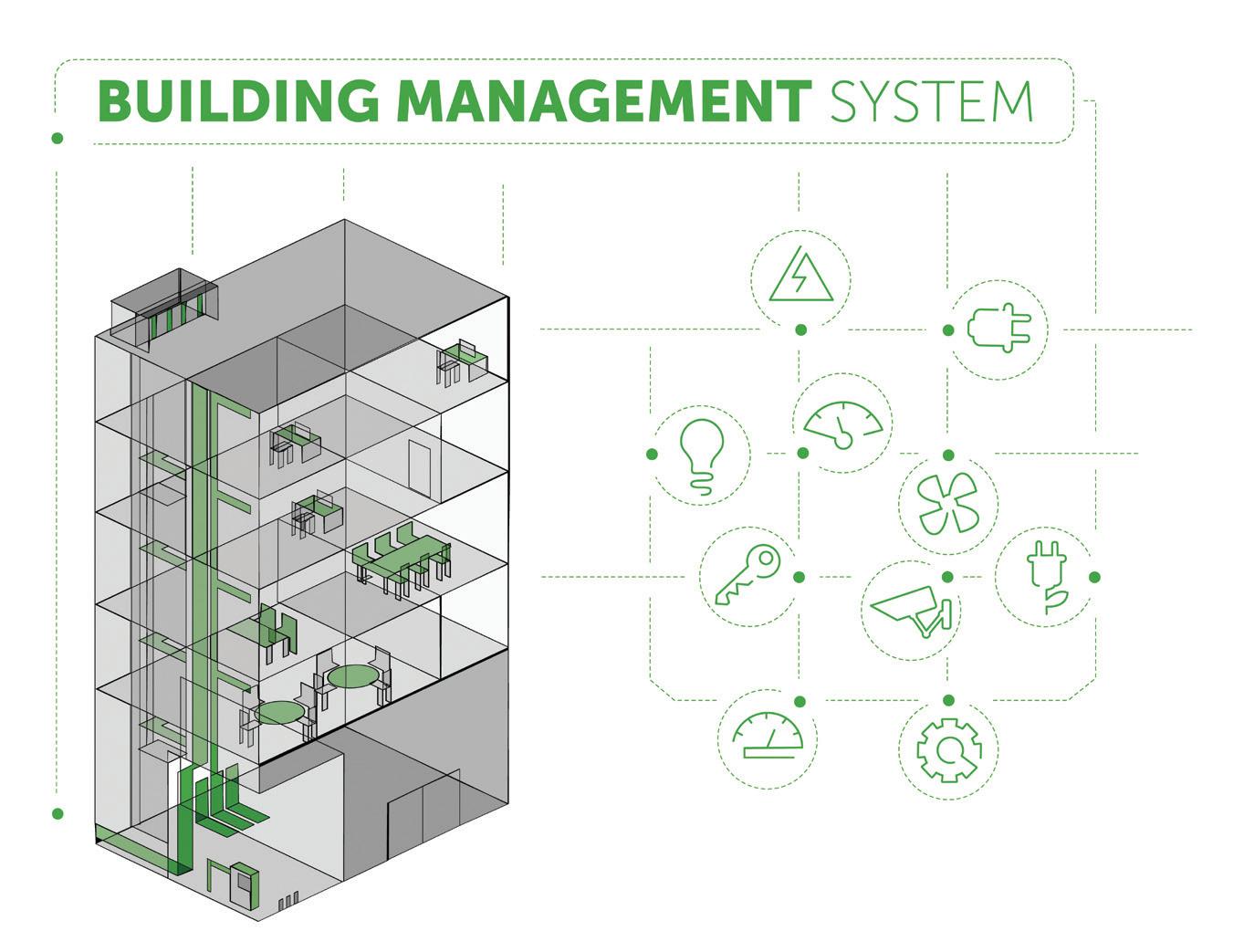
GIBs support grid-scale, efficient operations by employing on-site distributed energy resources and curtailable loads. The key to enabling grid interactivity lies in the interoperability between the building management system, the microgrid management system and the electrical power management systems.
This interactivity also requires a standardised exchange with grid automation systems such as advanced distribution management systems and distributed energy resource management systems.

GIBS CAN SUPPORT THE GRID AND THE ENVIRONMENT
Grids across the world, including South Africa, are under tremendous pressure to deliver building electrification and urbanisation, while keeping pace with innovation. This pressure can be reduced by utilising buildings which are capable of flexible load operations such as load-shedding and load-shifting.
With energy data from power meters and load controls via the building management system, a grid interactive building can shed its load from the grid. The building can opt to compensate by using on-site generation assisted by the microgrid controllers. In turn, this can reduce demand on the grid during peak hours.
Conversely, load-shifting is dictated by planned schedules that allow the building to use or power major loads at a different time. For example, if there is a predicted demand charge at 9am, a building can choose to turn on

its heating or cooling systems an hour earlier and allow coasting.
From a carbon footprint perspective, with solar tempering, thermal enveloping and optimised energy modelling, buildings can reduce energy use. For example, adding solar PV to the roof can make the building net-zero energy or even net-positive.
Ultimately, GIBs are designed to integrate renewable energy generation sources into the grid, relying heavily on data generation capabilities, digital metering, controls and IoT sensor systems to process data for decision-making and automated controls.
OCTOBER 2023 SOUTH AFRICAN BUILDER 41 INNOVATION
SKILLS AND TRAINING
ESSENTIAL WORKSHOPS AND MASTERCLASSES
The CASI Construction Academy live online courses are cost-efficient, offer essential, customised learning and are easily accessible. Please note that all the courses are limited to 15 per session.
sector and two of them, FIDIC and NEC, are used internationally. JBCC and GCC 2010/2015 are created by South African entities and mainly used in SA for building and engineering works.
CONSTRUCTION CONTRACTS MANAGEMENT MASTERCLASS:
JBCC, NEC, GCC, FIDIC – 3 CPD points
Johannesburg: 25-28 October 2023, 27-29 November 2023, 11-13 December 2023
Cape Town: 25-28 October 2023, 27-29 November 2023, 11-13 December 2023
Durban: 25-28 October 2023, 27-29 November 2023, 11-13 December 2023
Delegates from both the private sector and government have attended this masterclass, which covers conditions for international contracts for civil and industrial projects. The above four contracts are a recurring theme in SA for contractors and consultants alike, as they form part of the standardisation of the Construction Industries Development Board (CIDB) of SA. This makes them compulsory when government entities contract for built environment projects. These standard contracts are also widely in use in the commercial contracting
Participants will also learn how pandemics like Covid-19 and natural disasters affect construction contracts.
• Only members of ECSA will be able to claim these CPD points from the ECSA website.
ESTIMATION AND TENDERING WORKSHOP – 2 CPD points
Johannesburg: 9-10 October 2023,
Durban:
Cape Town:
The tender process often adds to the pressures faced by professionals in the industry. Delays, poor documents, inaccurate estimations on value of work, ill-equipped staff managing tenders and risks being passed on to contractors are among these.
In this workshop, attendees will discuss how to develop strategies for preparing well-researched bids, how to mitigate risks and how to effectively engage all participating stakeholders. They will also come to understand the conditions of their contracts and how to modify them in ways which are mutually beneficial, without taking on excessive risk.
FINANCIAL MANAGEMENT AND FINANCIAL PROJECT APPRAISAL FOR ENGINEERS –

2 CPD points
Johannesburg: 16-17 October 2023, 13-14 November 2023, 14-15 December 2023
Durban: 16-17 October 2023, 13-14 November 2023, 14-15 December 2023
Cape Town: 16-17 October 2023, 13-14 November 2023, 14-15 December 2023
The aim of this intensive, hands-on workshop will allow you to master business plans, budgets, forecasts,
SOUTH AFRICAN BUILDER OCTOBER 2023 42
9-10 November 2023, 7-8 December 2023
9-10
9-10
October 2023,
November 2023, 7-8 December 2023
9-10 October 2023, 9-10 November 2023, 7-8 December 2023
profit and loss statements and end-of-year accounts using the same language as the business operations of your organisation.
CONSTRUCTION CLAIMS MANAGEMENT WORKSHOP – 2 CPD points
Johannesburg:
2-3 November 2023, 4-5 December 2023
Durban:
2-3 November 2023, 4-5 December 2023
Cape Town: 2-3 November 2023, 4-5 December 2023
The construction industry has a reputation for disputes and conflict. The correct preparations and submissions of contractual claims are fundamental to success in being awarded additional contracts and monies on a project. Failure to adhere to the very strict procedures laid down in the various contracts will in most cases render a claim invalid. This masterclass will demonstrate the various mechanisms detailed in the major contracts prescribed by the CIDB for infrastructural work in SA.
PROJECT MANAGEMENT IN CONSTRUCTION WORKSHOP – 3 CPD points
Johannesburg: 18-20 October 2023, 22-24 November 2023, 13-15 December 2023
Cape Town: 18-20 October 2023, 22-24 November 2023, 13-15 December 2023
Durban: 18-20 October 2023, 22-24 November 2023, 13-15 December 2023
This workshop will provide new insights into project management approaches, human behaviour, interdependencies and relationships that facilitate successful projects. Managing and executing projects that are on time and within budget is the primary goal and can be done by identifying, exploiting and managing project improvements and changes.
ROADS & PAVEMENT DESIGN, MAINTENANCE AND CONSTRUCTION –2 CPD points

Johannesburg/online: 9-10 November 2023, 4-5 December 2023
This course gives participants a combination of theoretical knowledge and practical experience in construction, operability, design and
maintenance of road facilities. It covers the construction of a road to the alignment, gradient and cross-falls selected by the designer, which often involve a considerable amount of earthworks. The operations necessary for setting out and controlling earthworks are described and elaborated on, together with a brief outline of the elements involved in a geometric design.
The course also presents the operations involved in the loosening, removing and depositing of earth, soil and rock. It provides information on the construction of earthworks and the preparation of pavement foundations subsequent to the construction of a pavement structure.
Roadside construction is also covered, including access for the construction and maintenance of the road, control of surface water drainage, the provision of underground drainage, the provision of safety barriers, and signs and lighting for the safe operation of the road. Worked examples and case studies are used throughout to facilitate practical learning.
All delegates will be required to complete a pre-workshop questionnaire.
For further information and to register, tel: 087 700 5633. E-mail: register@casits.co.za. Visit: www.casits.co.za
• We also conduct in-house training for five or more delegates at a discounted rate.
OCTOBER 2023 SOUTH AFRICAN BUILDER 43 SKILLS
AND TRAINING
BAMBOO CLOUDS BY THE WATER: WHITE CRANE LAKE VISITOR CENTRE by
Located adjacent to Yingtan City, Jiangxi Province, White Crane Lake covers an area of 10km² and boasts panoramic views of the horizon, bamboo forests on its shores, calm waters and a vast blue sky above, creating a tranquil and poetic atmosphere for visitors there.
The Visitor Centre is the focal point of a comprehensive development initiative for the lake. The challenge for the designers was placing a stylistically modern cultural building, aimed at increasing tourism, in a natural environment defined by its quiet ambience. The project had a multitude of functional requirements to fulfil, while balancing the need to elegantly co-exist with a landscape of forests, mountains and the lake itself.
DESIGN CONCEPT
Considering that the building’s programme required nearly 3 000m² of area, it was decided that the new building would accentuate the natural qualities and atmosphere of the site of White Crane Lake itself, rather than being visually incongruous with its surroundings.
The Visitor Centre is located on a tidal flat, surrounded by the lake on the north, south and west sides of the site, with an extensive bamboo forest to the east. As the sun rises in the early morning, the lake is shrouded in dense clouds and mist which gently disperse themselves in the surrounding forests. Visitors walking through the forest at this time of day have the impression of simultaneously walking through trees and clouds, high in the sky.
Archperience Design
In response to these phenomena, the architect proposed the design concept of “Bamboo Clouds by the Water”, as a means of evoking this fleeting and deeply poetic early-morning atmosphere, and integrating the four site elements of water, shore, bamboo and cloud to express it architecturally.
In order to reduce its intervention on the environment, the volume of the building adopts a decentralised layout, so that its overall form is divided into a series of connected volumes which effectively reduce its perceived visual scale. The building’s design also incorporates rounded forms and curves, softening its relationship with its surroundings and giving the impression of flow and movement – the project invites visitors to stroll around it in order to take in its overall design,

SOUTH AFRICAN BUILDER OCTOBER 2023 44 GLOBAL VIEW OCTOBER 2023 SOUTH AFRICAN BUILDER 44
(Above): The Visitor Centre at night, a striking and memorable illuminated vision enhanced by its bamboo “skin”.
unfolding like a traditional Chinese scroll painting on the lake.
CREATING THE BUILDING’S SKIN
The scheme incorporates a transparent, undulating glass volume with a second layer of “bamboo skin”. The continuous skin appears to float over the glass volume, analogous to a gentle cloud of bamboo by the water – while formally, it integrates the separate building masses, giving the building a sense of fluidity, continuity and integration with nature.

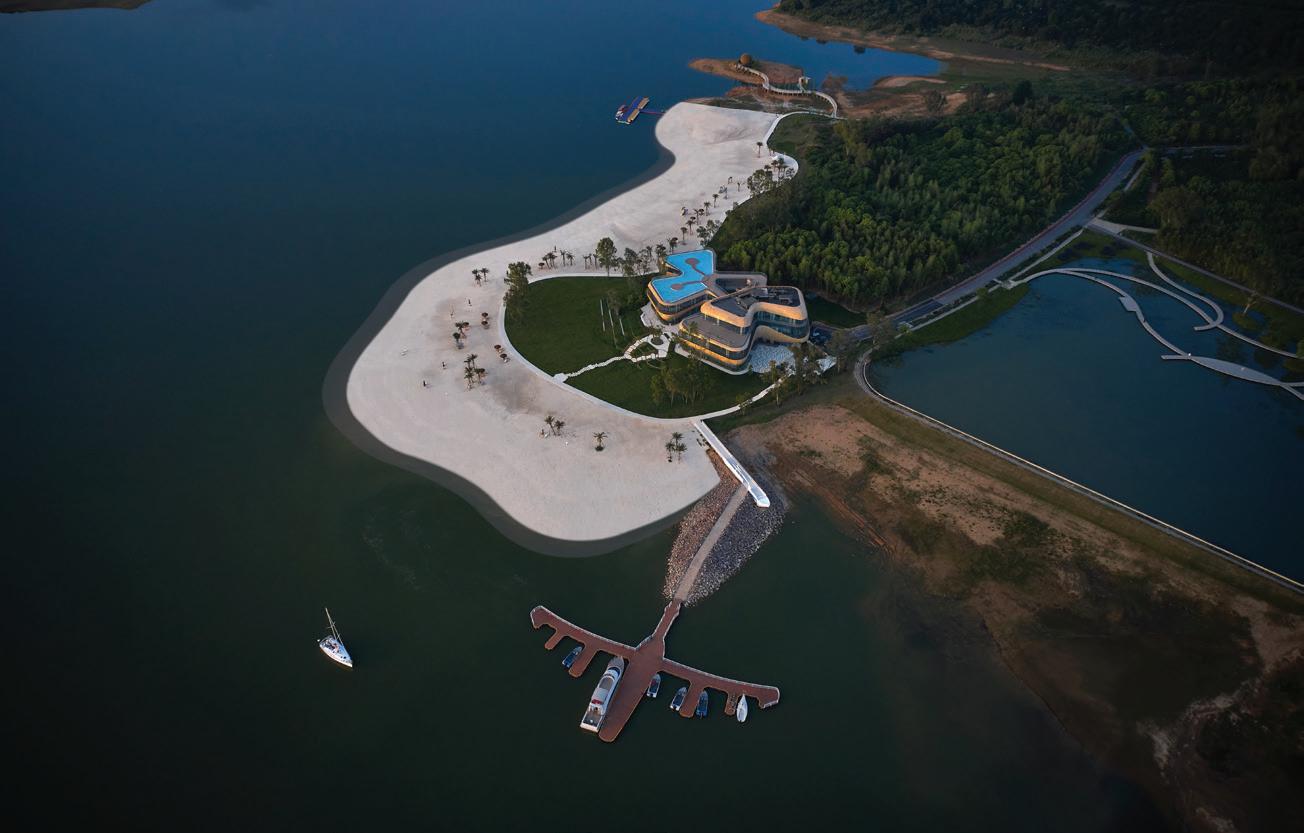
The form of the woven “bamboo skin” was developed according to an analytical design process: first, the defining line of the building’s envelope was established according to programmatic and formal considerations. Following this, secondary points along the envelope were chosen as a basis for the undulations of the skin, according to the building’s functions and the particular view of the landscape at each point, resulting in the semblance of a floating bamboo cloud from the exterior and ensuring the best possible views from the interior public spaces.
In the process of developing the final form and texture of the woven “bamboo skin”, the architect conducted a series of schematic explorations, looking at various potential patterns which could be incorporated. A large number of computer analyses were made using Grasshopper software. In the end, the lightest option was chosen for its clear, translucent quality and practical
OCTOBER 2023 SOUTH AFRICAN BUILDER 45 GLOBAL VIEW
(Below): An aerial view of the Visitor Centre.
WOMEN IN ENGINEERING AFRICA NETWORK CONFERENCE & EXPO
Dates: 22, 23 & 24 November 2023
Venue: Monte Casino, Pivot Hotel, Fourways
CONFIRMED SPEAKER FACULTY INCLUDE:
INTERNATIONAL PERSPECTIVE

NASA PANEL DISCUSSION
Aprille J. Ericsson, Ph.D. New Business Lead, Instrument Systems and Technology Division (ISTD) NASA GODDARD SPACE FLIGHT CENTER, GREENBELT, MD 20771
AFRICAN PERSPECTIVE
Ing. Miriam Korantema Amponsah President
WOMEN IN ENGINEERING Manager: Bulk Customer Acquisition ELECTRICITY COMPANY GHANA

INTERACTIVE WORKSHOP
Heighten your self-leadership by learning to dial up your inner mentor and dial down your inner critic
Briony Liber Career & self-leadership coach BRIONY LIBER COACHING AND CONSULTING PTY LTD

Dr Emma Molobi Technology Management Principal Engineer (Rolling Stock Technology) TRANSNET FREIGHT RAIL




Mazande Ntshanga Inner West: Project ManagerEconomic Development Unit, Projects Unit (EDU) ETHEKWINI MUNICIPALITY
Lindiwe Magidimisa Principal Operational Performance DE BEERS GROUP MANAGED OPERATIONS



Mathabo Masegela Senior Manager: Planning ROADS AGENCY LIMPOPO
Mulalo Nemataheni Certified Financial Planner IMPOWERX ADVISORY SERVICES
Mihlali Sitefane Director SITEF & CO
Tamara Mathebula Independent Consultant, Public Speaker and MC
Eugene Herbert Managing Director MASTERDRIVE
CONFERENCE HIGHLIGHTS
Choose ONE of The 2 Activities Below: Emthunzini Lion & Safari Park Tour



NB* For further details, please refer to Day 3
Delegates can join us for a tour through Soweto NB* For further details, please refer to Day 3

10 Attendees will stand a chance to win a complimentary Defensive Driving Course voucher sponsored by MasterDrive
Thembeka Kolele
Director: Projects Cape Town Regional Office NATIONAL DEPARTMENT OF PUBLIC WORKS AND INFRASTRUCTURE


Dorah Tlala Group Chief HR Officer PROCONICS
Elizabeth Booi Business Intelligence Data Architect UNIVERSITY OF WESTERN CAPE




Prof Nita Inderlal Sukdeo Associate Professor DEPARTMENT OF QUALITY & OPERATIONS MANAGEMENT FACULTY OF ENGINEERING & THE BUILT ENVIRONMENT UNIVERSITY OF JOHANNESBURG


Xoli Khoza Lead Project Manager- KZN Region MAFANYWA MPHAGE QS AND PM
Athule Ngqalakwezi Senior Engineer MINTEK
Nutritional Talk with Chef and Nutritionist, Chef Naledi



KEY STRATEGIES TO BE DISCUSSED
• ROAD MAP TOWARDS PROFESSIONAL CERTIFICATIONSouth African Accreditation Transformation through Professional Registration
• Approaches to Mainstreaming Gender in the Engineering Sector: A Gender Analysis
• Highlighting the future of women in the engineering sector: Using the past to build for the future generation of women engineers
• Cultivating effective leaders through mentorship within the Engineering Sector
• Providing a practical roadmap to integrating data analytics into the engineering workflow while inspiring the next generation of female engineers
• Women in STEM - Breaking the Glass ceiling
• Self-Identity – Key to leadership advancement & career development

For easy registration contact: +27 (0) 11 326 2501 or email amrita@intelligencetransferc.co.za or fax: +27 (0) 11 326 2960 or visit: www.intelligencetransferc.co.za

14th Annual
Researched&DevelopedBy:
feasibility as a “woven” texture for the building’s skin.
Extensive consultations regarding the building skin were made with both the client and suppliers, while significant onsite testing was also conducted in order to ensure durability and the desired visual and tactile effect. In the end, the designer adopted a special surface-treated metal alloy, which provides a robust material with a strong resemblance to natural bamboo. Although it does not possess the tactile qualities and soft touch of natural bamboo, it was chosen for its long-term viability, ease of maintenance and overall cost. For a modestly scaled public building, it was deemed to be the best solution by all parties involved.
The skin is composed of a diamond-shaped grid which serves as a base layer and a densely interspersed woven layer, which is supported by a series of curved galvanised steel pipes. The curvature of each steel pipe corresponds to the curvature of the skin. The pipes are vertically spaced at 1 500mm intervals to ensure visual consistency of the curtain wall. The final result successfully achieves the “bamboo cloud” effect that the architect imagined from the outset.
A comprehensive lighting system has been integrated into the building’s outer skin, so that when the sun goes down and darkness sets in, the complex external latticework brilliantly lights up. The building appears to shine, recalling a bamboo lantern
floating on the lake, creating a
WHIRLPOOL STAIRCASE
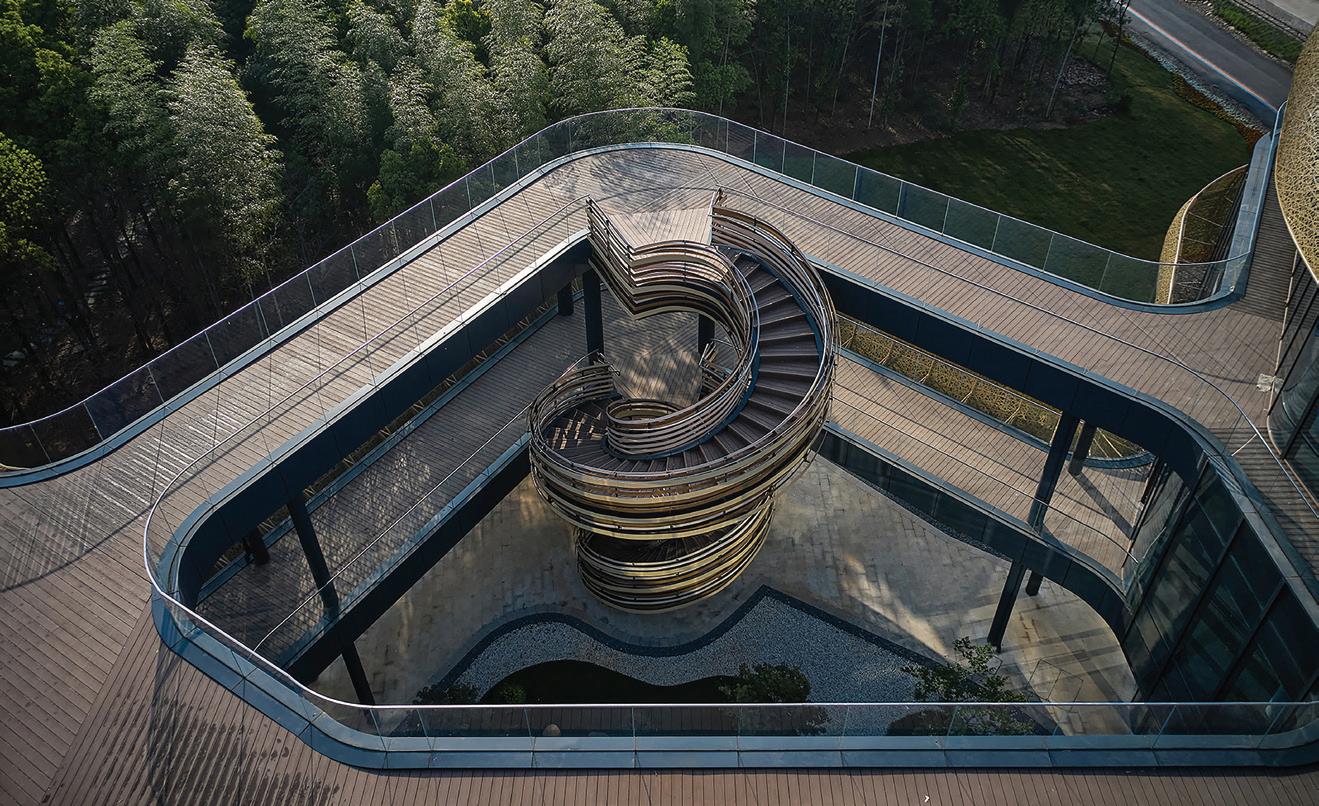
In the courtyard enclosed by the building volume and a series of elevated walkways, a spiral staircase allows visitors to ascend to the second-floor viewing platform from ground level, but also provides a strong visual focus for the courtyard space overall. Its concentric circular steps with changing radii and variegated side railing create a dynamic, complex shape which provides a creative tension with the other elements of the space.
ROOFTOP POOL
A borderless pool has been incorporated into the roof terrace on the second floor, which has been designed so that the surface of its water seems to blend with the distant blues of the lake and sky beyond when looking over and across it.
FUNCTION
The Visitor Centre is divided
into a number of clearly legible volumes whose functions include a general reception area, restaurant, conference space and VIP Club, among others.
The site area is 6 500m² and the architectural area 2 620m². The project began in December 2021 and was completed in May this year.
The main materials were metal alloy (specially surface-treated with bamboo texture), a glass curtain wall and dark grey aluminium plate.
Project Architect: Jin’ang Yang
Design Team: Chuanhui Huang, Zhendong Wang, Zheng Zhang, Huijuan Wang
Design Institution:
Archperience (Beijing) Design and Consulting Co.
Main Contractor: CSCEC Strait
Construction and Development Co Ltd
Photographer: Jianghe Zeng
OCTOBER 2023 SOUTH AFRICAN BUILDER 47 GLOBAL VIEW
(Below): The walkways around the centre.
memorable scene for visitors to the site.
CAPTAINS OF CONSTRUCTION
MBA REGIONAL LISTING AND AFFILIATE MEMBERS




Master Builders Association
Boland
Contact: Daniel Uys
E-mail: info@mbaboland.org.za
Tel: 021 863 3330
Master Builders Association
East Cape
Contact: Greg Steele
E-mail: ecmba@global.co.za
Tel: 041 365 1835
Master Builders Association
Free State
Contact: Stephan Claassen
E-mail: admin@mbafs.co.za
Tel: 057 352 6269
Master Builders Association
North
Contact: Mohau Mphomela
E-mail: info@mbanorth.co.za
Tel: 011 805 6611
Master Builders Association
KwaZulu-Natal
Contact: Vikashnee Harbhajan
E-mail: info@masterbuilders.co.za
Tel: 031 266 7070
Master Builders Association
Greater Boland
Contact: Duane Phillips
E-mail: info@mbagreaterboland.org.za
Tel: 023 342 6964
Master Builders Association
Northern Cape
Contact: Graham Andrews
E-mail: info@mbanc.org.za
Tel: 053 832 1762
Master Builders Association



Western Cape
Contact: Roekeya Bardien
E-mail: info@mbawc.org.za

Tel: 021 685 2625
Association of Architectural Aluminium Manufacturers of SA
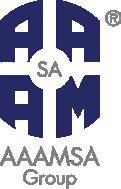
Contact: Johan Heyneke
E-mail: reception@aaamsa.co.za
Tel: 011 805 5002
CAPTAINS OF CONSTRUCTION
Breaking boundaries
Martella Barnard’s journey to senior implementation and training consultant at RIB Software – a preferred supplier of specialised software to the engineering and construction industry for 40 years – is evidence of its commitment to giving women the opportunities to forge their futures.

With over 35 years’ experience in the construction industry and qualifications in accounting tax and business analysis from Unisa, she began her career as a data capturer, where she developed an aptitude for costing, accounts and payroll.
“Having spent most of my time working with construction software programs, I became fascinated with how software can assist in streamlining revenue and costs,” she says.
She believes that women bring a distinctly analytical perspective to problem-solving, information evaluation and decision-making, which are crucial in ensuring a safe and efficient work environment.
She suggests that companies root out gender discrimination by taking a hard stance against sexism or bullying in any form, offering onsite childcare or flexible work arrangements for mothers and supporting women’s career advancement by cultivating a mentoring culture.
Barnard urges women to remain steadfast in their pursuit of a career in the industry. “While there’ll be hurdles along the way, remaining true to yourself and tackling all tasks with energy and determination will pave your pathway to success,” she says.
SOUTH AFRICAN BUILDER OCTOBER 2023 48











BRAND SUPPORTERS AFRISAM www.afrisam.co.za debbie.harvey@za.afrisam.com A. SHAK CONSTRUCTION A DIVISION OF Corner North Rand Trichardt Road, Bartlett AH, Boksburg BOKSBURG Corner Fourways Boulevard & Roos Street Fourways FOURWAYS www.leroymerlin.co.za leroymerlinsa Merlin as your Hardware Store 2022 you making us best again Best Joburg READERS’ CHOICE AWARDS 2022 WINNER boj winners logos.pdf 1 2022/10/10 09:56:25 MASTER BUILDERS SOUTH AFRICA (MBSA) www.masterbuilders.org.za info@masterbuilders.org.za 011 205 9000 MODERN DESIGN. MADE THE OLD-FASHIONED WAY. At Swartland, we only know one way to make doors and windows, and that’s to last. Our Kenzo range is built from strong, lightweight aluminium-alloy frames allowing for expansive walls of light, space and seamless integration with nature. Kenzo windows and doors require very TEKANO ROAD SOLUTIONS www.tekanors.co.za info@tekanors.co.za 010 065 4724/078 339 5768 TVH PARTS SOUTH AFRICA www.tvh.com sales.southafrica@tvh.com 011 281 2700 TWINSTAR www.twinstar.co.za Annemerie@Twinstar.co.za 012 670 9083 WOMEN IN ENGINEERING www.womenofintelligence.co.za amrita@intelligencetransferc.co.za 011 326 2501





































































































































































































































 By Devon van der Venter, PR account manager: MSL Group
By Devon van der Venter, PR account manager: MSL Group
























































































